I created my Palermo Guide to help you plan and get inspired for your trip to Sicily’s lively capital. Truly, there is no where in Europe quite like Palermo – Old Soul Explorer.
I am convinced there is no city in Europe quite like Palermo.
Palermo can be loud, chaotic, even dirty, but it has undeniable character. Taxis and vespas speed past narrow, cobble-stoned streets lined with cafes and restaurants. Above, the watchful eyes of saints and statues perched on crumbling baroque facades and pointed spires watch the fast paced energy of the city. People hang their clothes on the balcony and put up striped sheets over their patios, trying to find a little relief from the unforgiving Sicilian heat. When you get high enough, you can see a thousand domes, endless bell towers, the mountains, and the vastness of the Mediterranean Sea.
Palermo – A Mediterranean Melting Pot
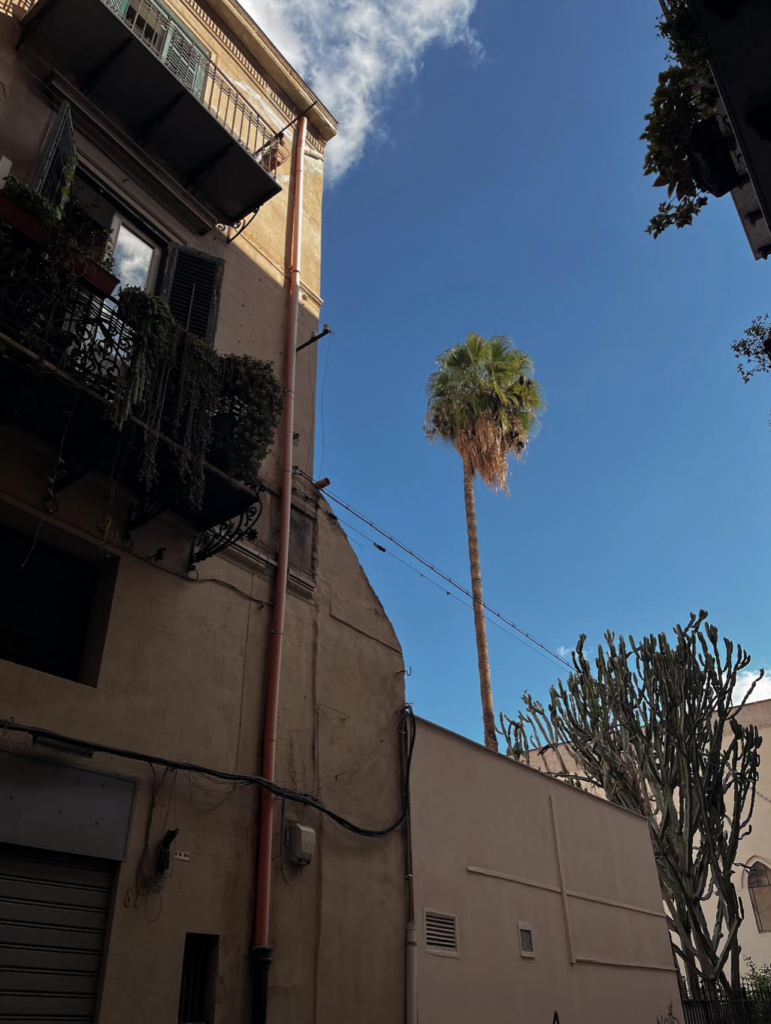
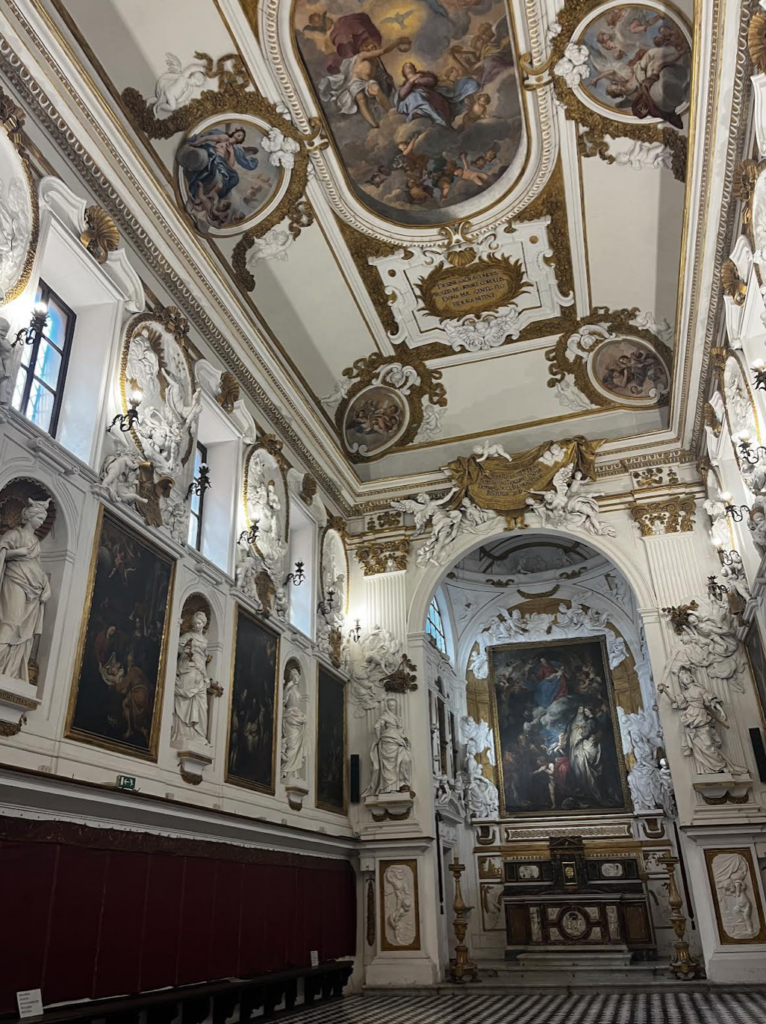
Sicily is situated in the center of the Mediterranean Sea. Because of the island’s central location, Palermo has always been a melting pot of peoples from various ethnicities, religions, and cultures. There is an undeniable African and Middle Eastern flare, and the city also resembles the feel of Latin America.
There is an air of authenticity here. Naturally, this unpretentious, imperfect city boasts a genuine setting for exploring. Moreover, the city has some of the most breathtaking and extraordinary art and architecture, even rivaling Rome.
Palermo is 3,000 years old. Throughout its history, the Greeks, Romans, Byzantines, Arabs, and Spanish have all governed Palermo. As a result, Palermo has become a true melting pot of architectural styles, niche cultural traditions, and fascinating superstitions.
My Palermo Guide – All you Need to Know About Sicily’s Lively Capital
Experience the raw beauty and rich history of Palermo, Sicily’s vibrant capital. From its chaotic charm to breathtaking architecture, discover why this 3,000-year-old city is unlike any other in Europe.
Palermo Guide Essentials
- Country: Italy
- Region: Sicily
- Language: Italian (Sicilian), English widely spoken
- Currency: Euro
- Emergency Information: 112 (general emergencies), 118 (medical), 113 (police)
- Climate: Mediterranean, dry summers, mild and wet winters
- Best time to visit: April-June, September- October
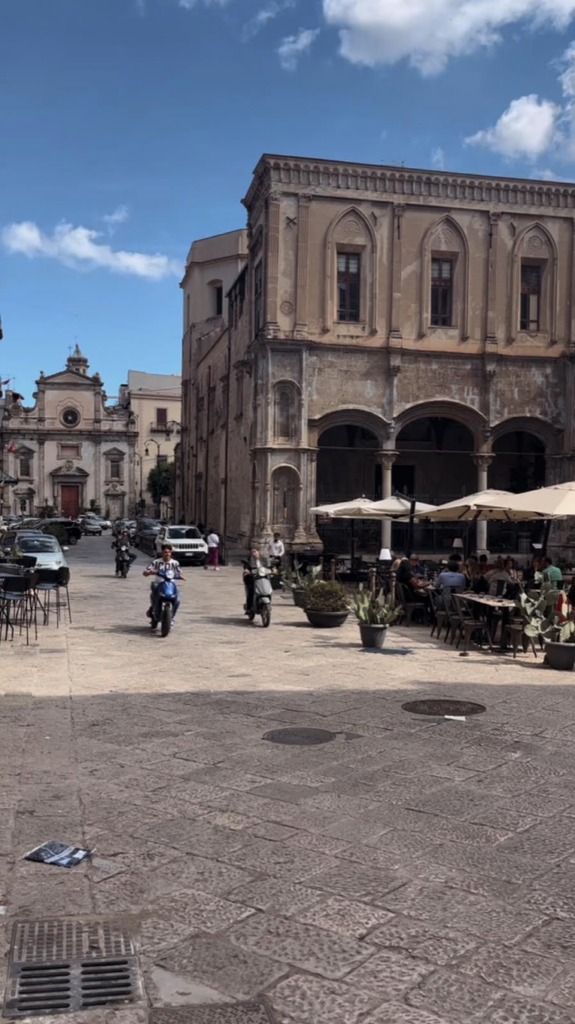
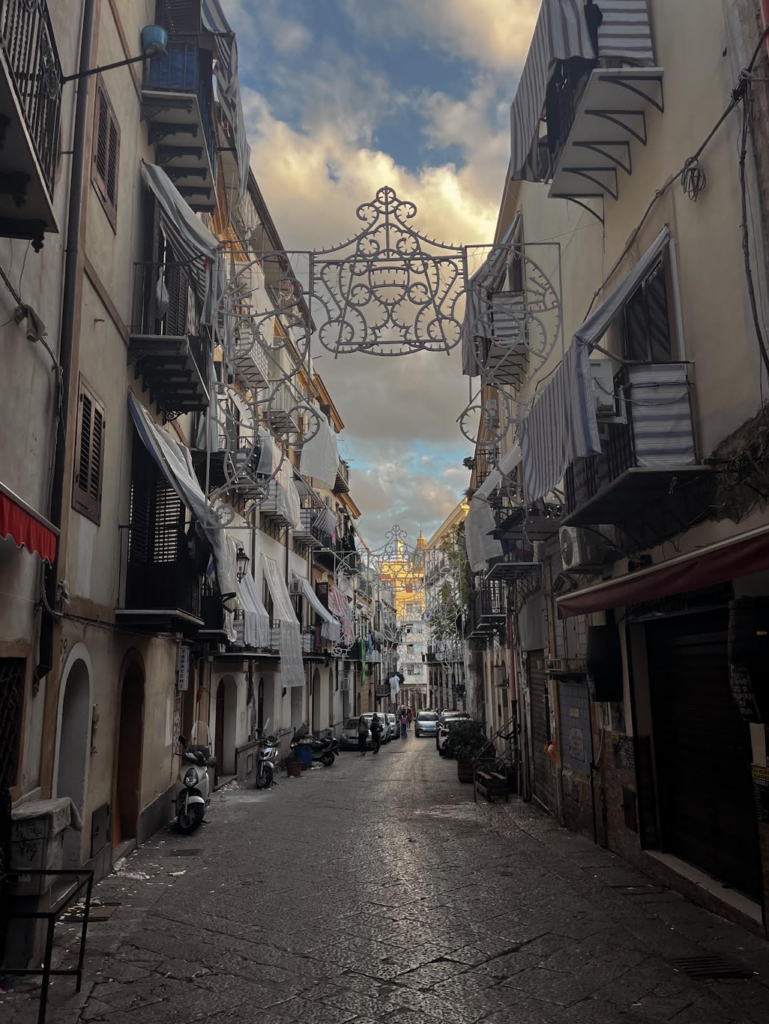
Best Time to Visit Palermo
In my opinion, the best time to visit Palermo and really experience the best of the city is April-June and September- October. By visiting in Spring, early Summer, and Fall, you will escape the worst of the Sicilian heat. Additionally, visiting in Spring and Fall will allow you to beat the worst of the crowds. Ever since Covid-19 ended, the demand for travel has really picked up and Sicily and Palermo are no exception.
Many people like to visit Sicily in the summer. The island has some of the best beaches in the entire Mediterranean Sea. There is something special about savoring Sicily in the Summer. Additionally, the feast of Palermo’s patron Saint Rosalia is on July 14 and is a time for festivities and celebrations throughout the city. Celebrations include massive street parades, fireworks, and unique religious ceremonies.
Winter starts in November and brings a season of rainy and cloudy weather to Palermo.
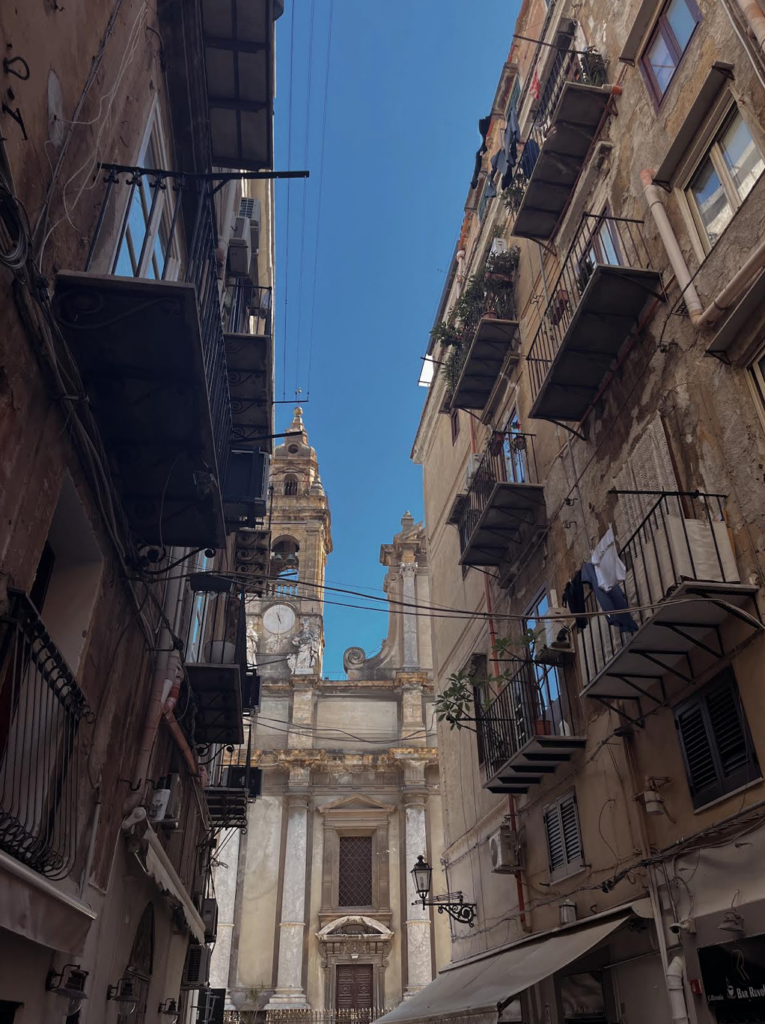
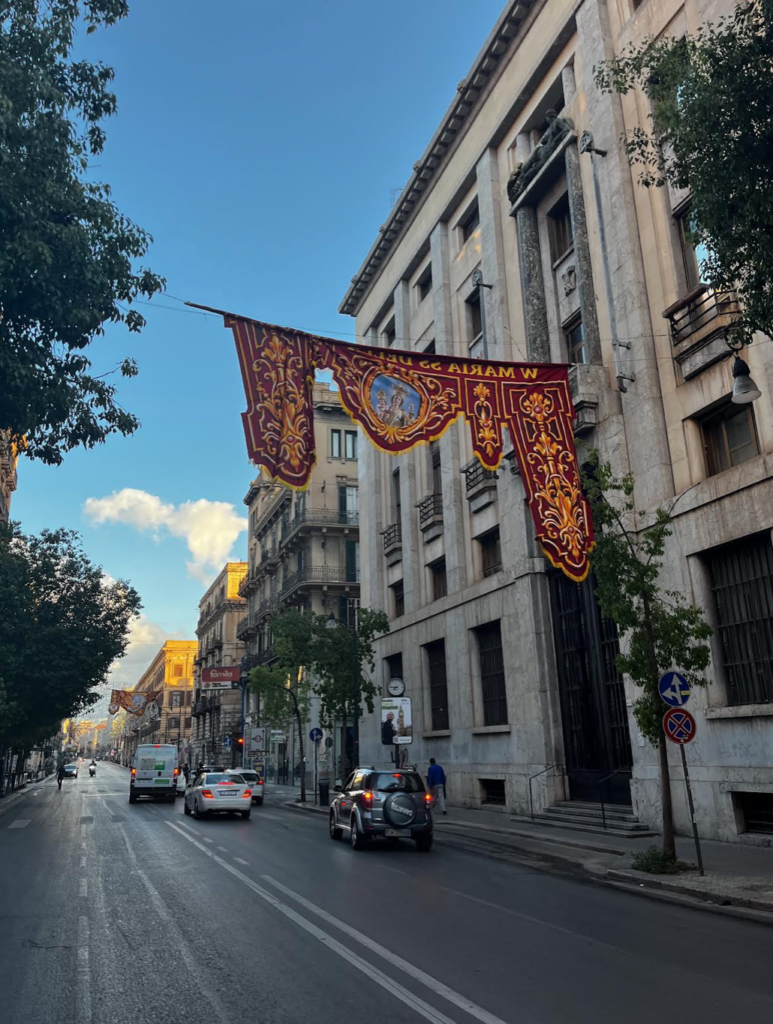
Getting to Palermo
Below are several ways to get to Sicily’s capital which I’ve included in my Palermo Guide.
Plane
The easiest way to get to Palermo is by plane. The Palermo Falcone-Borsellino Airport (PMO), is quite large. Located 22 miles outside of the city, the airport has direct flights from many major European cities. Additionally, several airlines offer transatlantic flights from the United States arriving at PMO.
Getting from the Airport to Palermo City Center
You can either get to the center of the city from the airport by taking a taxi or by public transit (bus or the Trinacria Express train) . I took a taxi which cost me €40. Moreover, Uber operates in Palermo and connects you to luxury cabs.
Ferry
Another interesting way to get to Palermo is by ferry. There are around 20 weekly ferry crossings from Naples on mainland Italy. Weather and time of year affect the frequency of the ferries.
There are also ferry crossings from Genoa, Sardinia, and even Tunis, Tunisia.
Train
You can get to Palermo from mainland Italian cities like Rome and Milan. It takes around 12 hours to get to Palermo from Rome and around 9 from Naples. Interestingly, the train will actually have to embark on a ferry at the strait of Messina which would be a fascinating experience.
Car
If you will be starting your trip to Sicily on the Eastern side of the island, it takes around 2-3 hours to get to Palermo from Catania or Messina.
Driving in Palermo
I personally do not recommend driving in Palermo. Drivers in this city are intense and aggressive. Additionally, parking is extremely limited. Roads and navigation can also be a serious problem due to lack of signage. Moreover, traffic can make navigating the city impossible.
I started my trip to Sicily in Palermo and returned to the airport to pick up my rental car before continuing my road trip around the island. This made for an easy return at the end of my trip.
// Road-tripping Sicily, everything you need to know (COMING SOON)
Safety in Palermo
The same level of caution should be exercised visiting Palermo as in any other large city.
Palermo is generally safe for travelers, the most common crimes are pickpocketing. Secure your items and consider wearing a money built to help protect your belongings. Furthermore, the Mafia while present still in Sicily does not target tourists. Most of their activity targets local business behind the scenes.
It is better to visit certain areas only during the day time. Also, the energy and feel of a neighborhood can vary greatly in Palermo from just a couple of streets. Certain blocks of the city are completely inhabited by immigrants from Africa, the Middle East, and South Asia. Noticeably, these neighborhoods are older, dirtier, and have less street lights. Hopefully, the city of Palermo will address these inequities to improve the living situations for all residents.
Women, specifically solo female travelers, should take extra level of care when visiting Palermo. Sicilian men have a stereotype for cat-calling women. Most of the time it’s harmless and can easily dealt with by ignoring and a firm tone.
Eating in Palermo
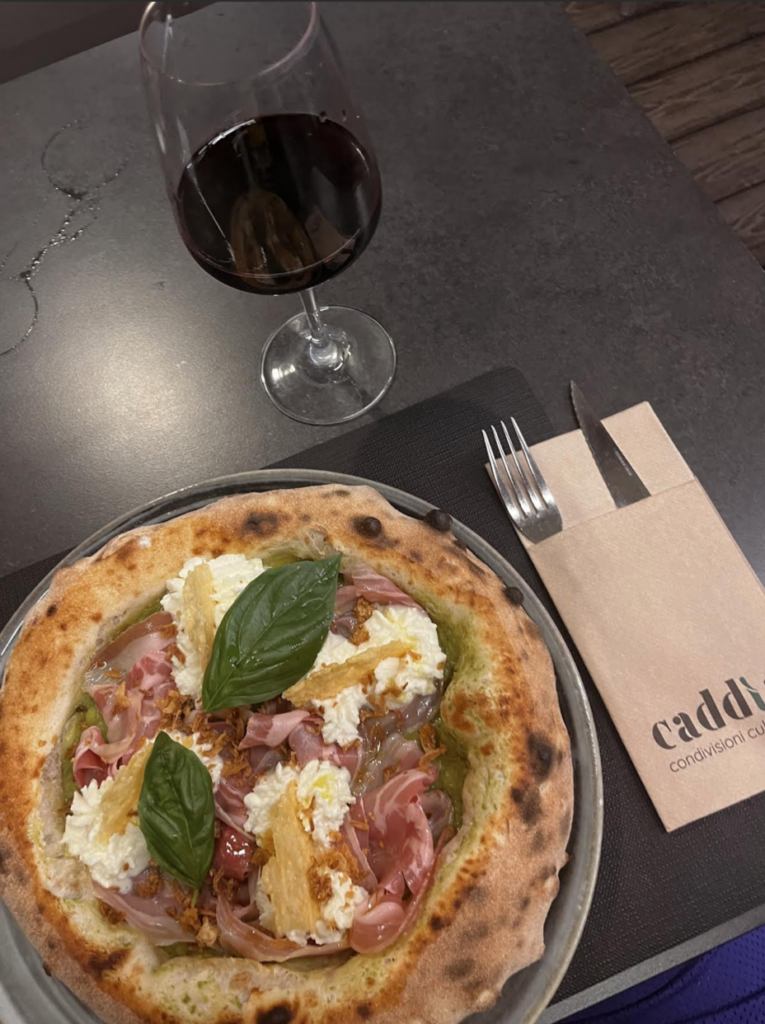
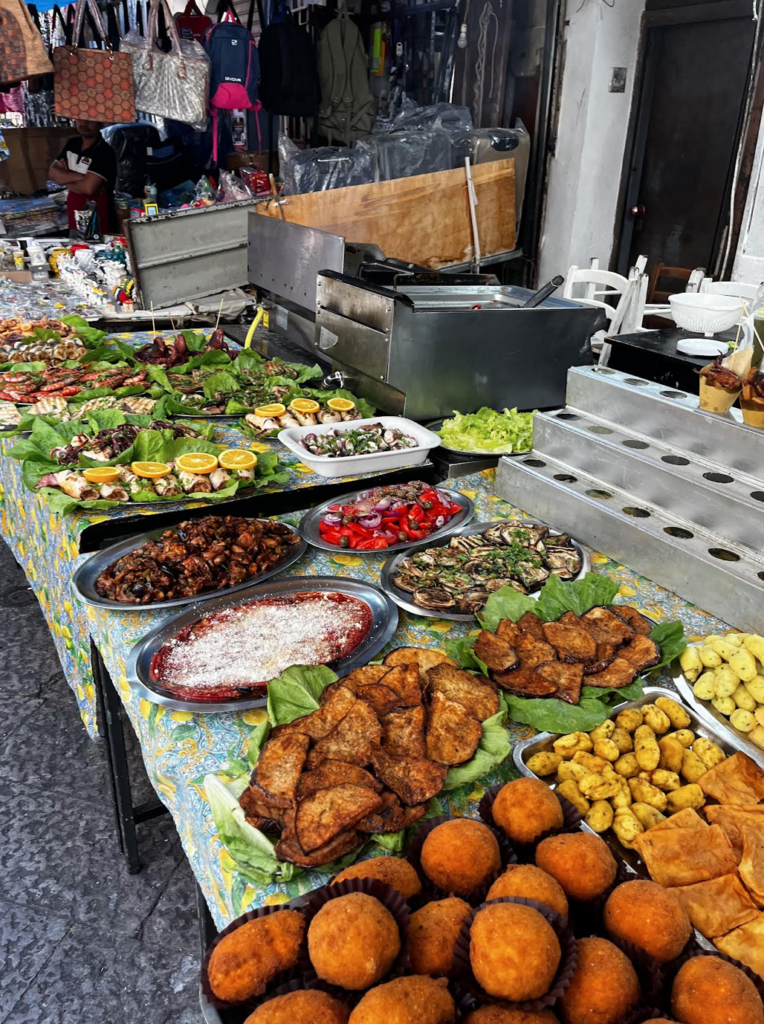
Food in Palermo will not leave you disappointed. In fact, I think the Sicilian cuisine is the tastiest food in all of Italy.
No trip to Sicily is complete without trying Arancini. This stuffed rice ball contains meat sauce, peas, and mozzarella. They are incredibly tasty. My favorite where in the Ballaro Market. Eating street food is a must when visiting Palermo.
My favorite pizza in Palermo was at a restaurant called Caddia. In particular, the pesto sauce pizza was amazing and the ambience eating on the patio was very relaxing.
Also, no trip to Sicily would be complete without an abundance of cannoli. My first time trying this sweet snack was in Palermo and I could not get enough of it throughout my time in Sicily.
Casa Nostra Boutique Hotel
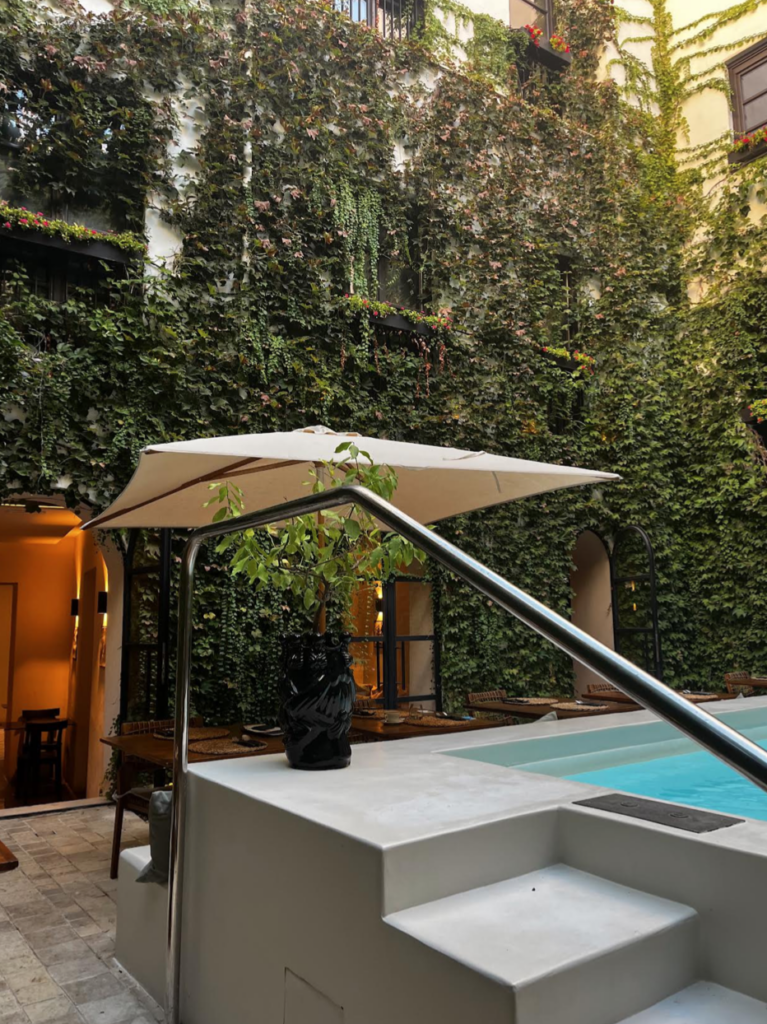
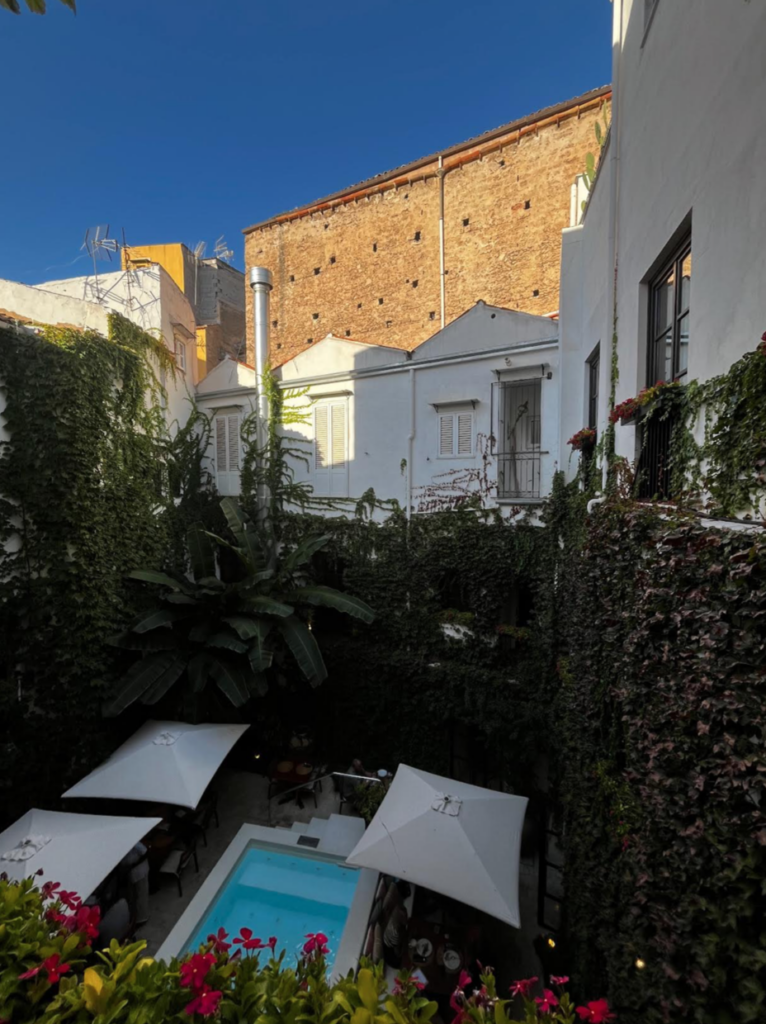
I spent my three nights in Palermo at the Casa Nostra Boutique Hotel. The beautiful little property tucked in the heart of Palermo’s historic city center is a renovated palazzo from the 19th century. Whenever I travel, I look to stay at places that have a strong connection to history and unique character. In my opinion, where you stay helps frame the intentions of the trip and the mindset of travel and wanderlust. It was the perfect place to settle in and rest before venturing into the heart of the Sicilian capital.
Casa Nostra had a really intimate and warm feel which made it so special. My favorite part of the hotel is the courtyard garden which is drenched in ivy and contains a pool. Additionally, the restaurant has excellent Sicilian breakfasts, a wide lunch and dinner menu, and a full bar.
My room was comfortable and included an espresso machine and views of the cobblestoned Palermo streets. I stayed in the cozy Massimo Standar Suite, a corner room. It was the perfect base for exploring the city.
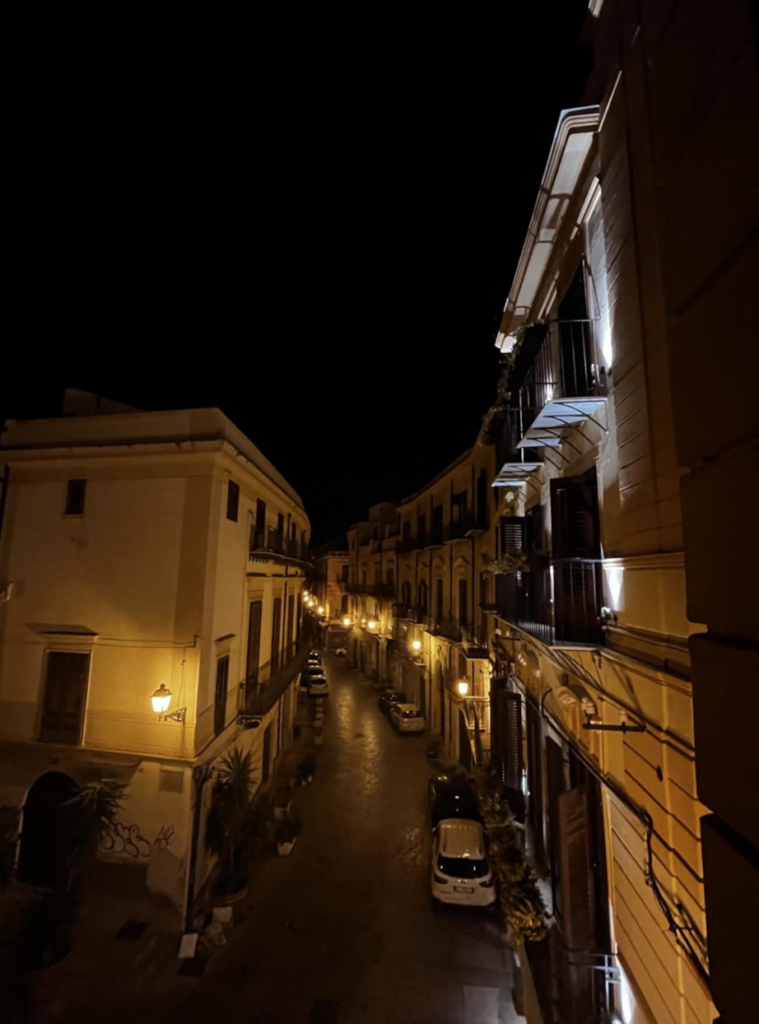
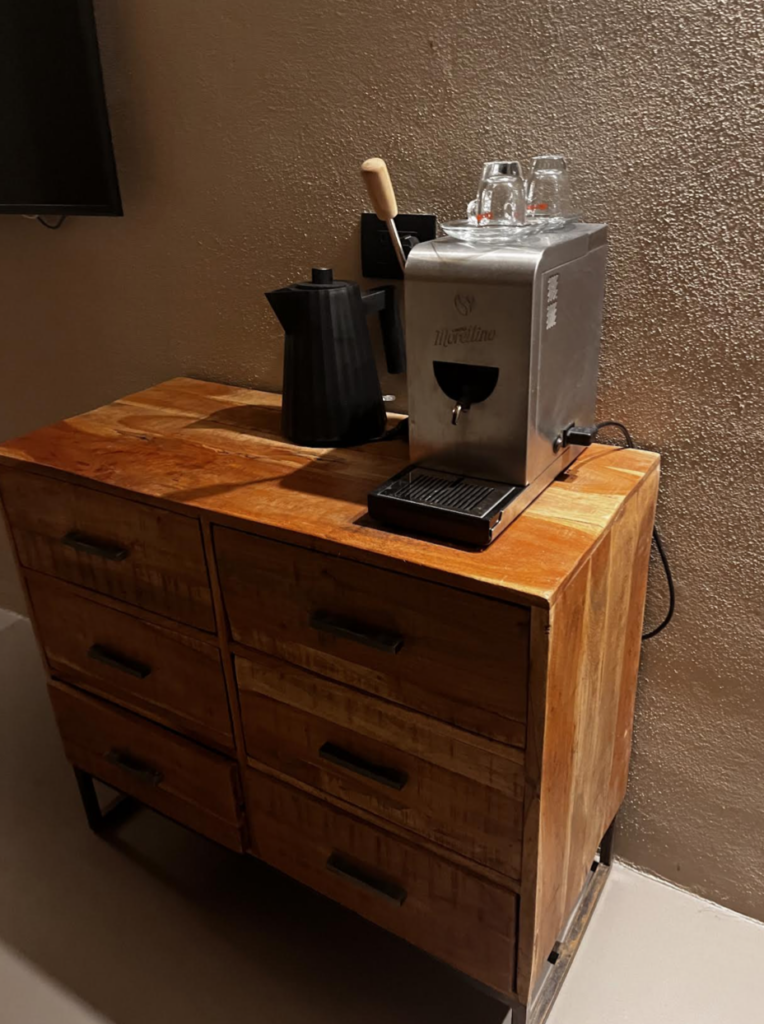
// No trip to Sicily would be complete without visiting the otherworldly Valley of the Temples. Everything you need to know about exploring the Greek Temples of Sicily.
Cathedrals, Churches, and Chapels in Palermo
The countless churches of Palermo play an important role in the spiritual, cultural, and architectural fabric of the city.
Many of the nearly 200 churches in Palermo contain artistic masterpieces and cultural treasures. Moreover, due to Palermo’s unique past, Norman, Baroque, Byzantine, Gothic, and even Arab influences can be found throughout the city’s sacred spaces. Although there are countless fascinating churches within the city waiting to be discovered, I have included some of the most noteworthy to visit in my Palermo Guide.
Palermo Cathedral
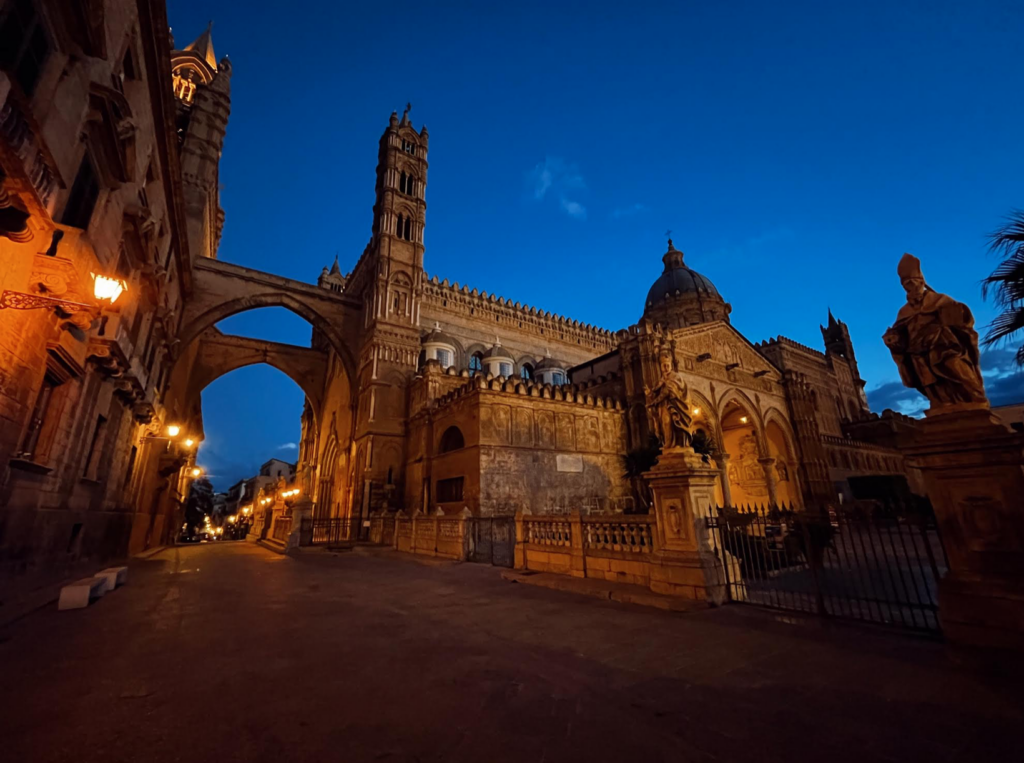
The Palermo Cathedral is one of the most recognizable structures in Palermo and all of Sicily. Rising over the city with its four dream-like bell towers, the Palermo Cathedral more closely resembles a fortress than a church. Undeniably, the cathedral’s presence is unlike any of the other great basilicas in Italy.
The Palermo Cathedral combines Norman, Arab, Gothic, Renaissance, and baroque styles, resulting in something completely distinctive. Indeed, Palermo Cathedral can only be described as something out of a fairytale. Pointed arches, detailed engravings, and soaring spires play with the imagination.
The interior is a clean, lofty, columned-lined space with several side chapels. When I visited the Cathedral, there was a procession honoring the Virgin Mary. The men of Palermo carry a ginormous statue of the Virgin Mary during several of these special processions and feast days throughout the year.
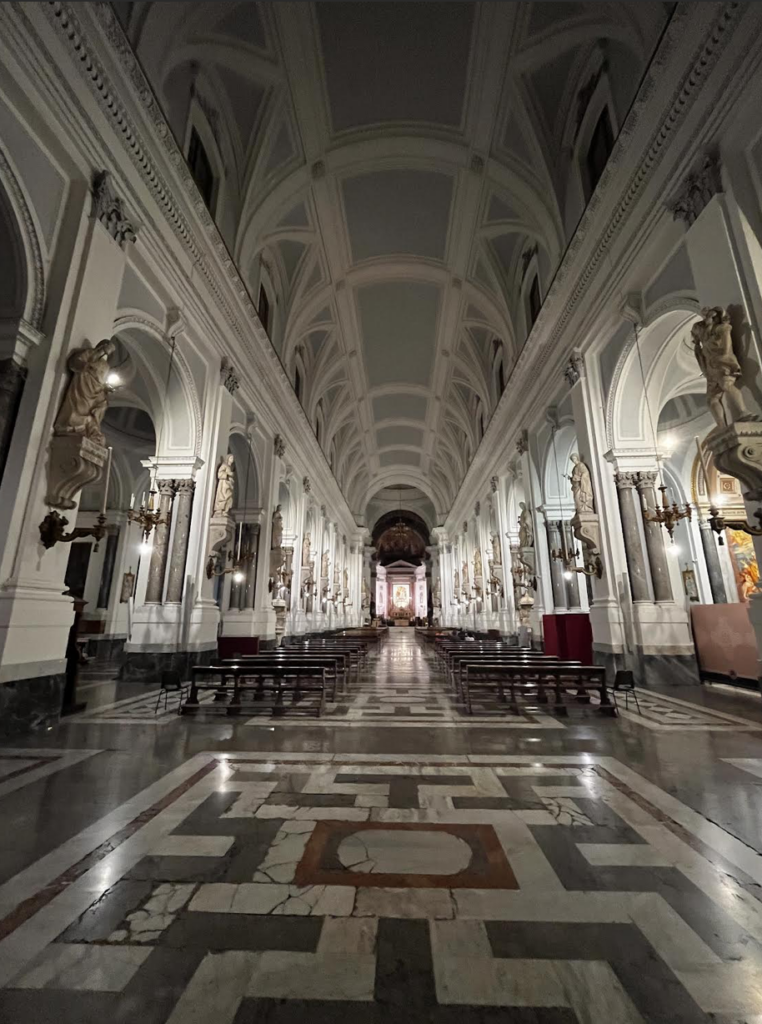
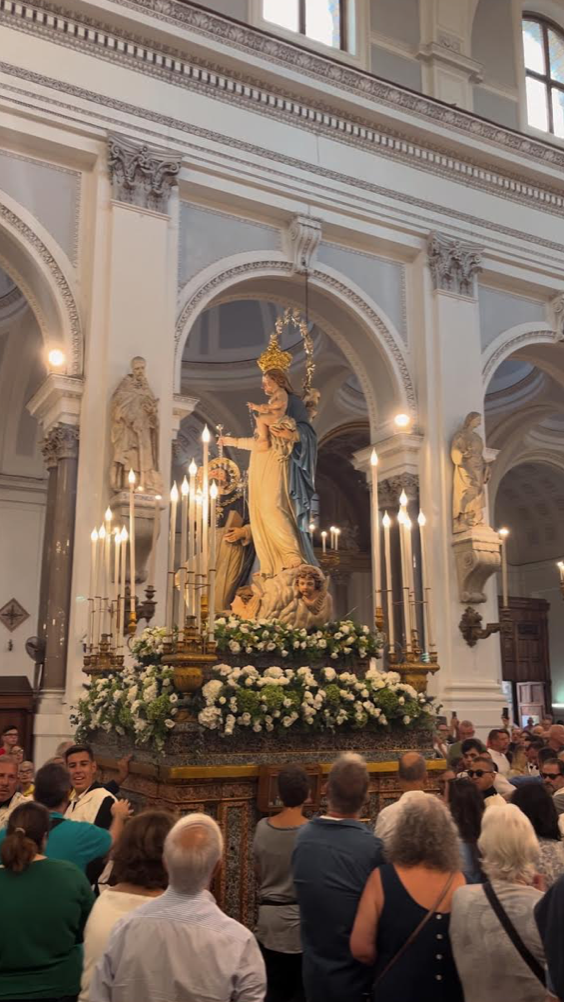
Best time to visit Palermo Cathedral
Since the Palermo Cathedral is such a remarkable symbol of the city, I visited multiple times. Additionally, since it’s in the center of the city, you will probably walk past it multiple times a day.
Sunrise and sunset are best for photographing the cathedral, as the sunlight paints the structure beautiful shades of amber, gold, and orange.
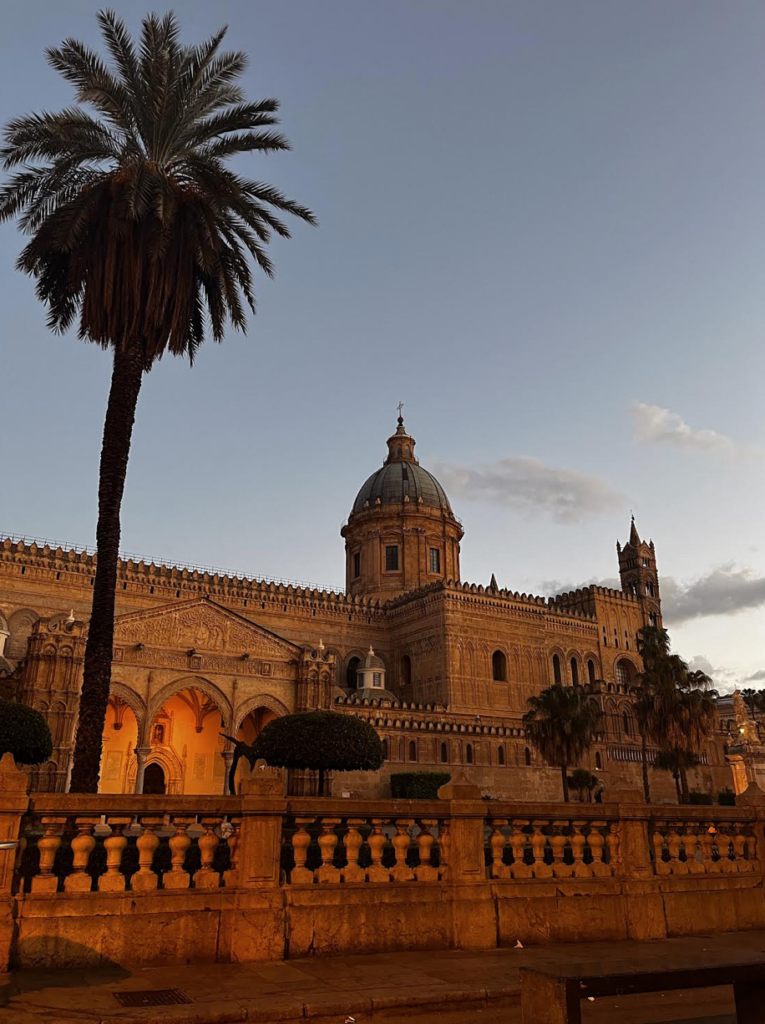
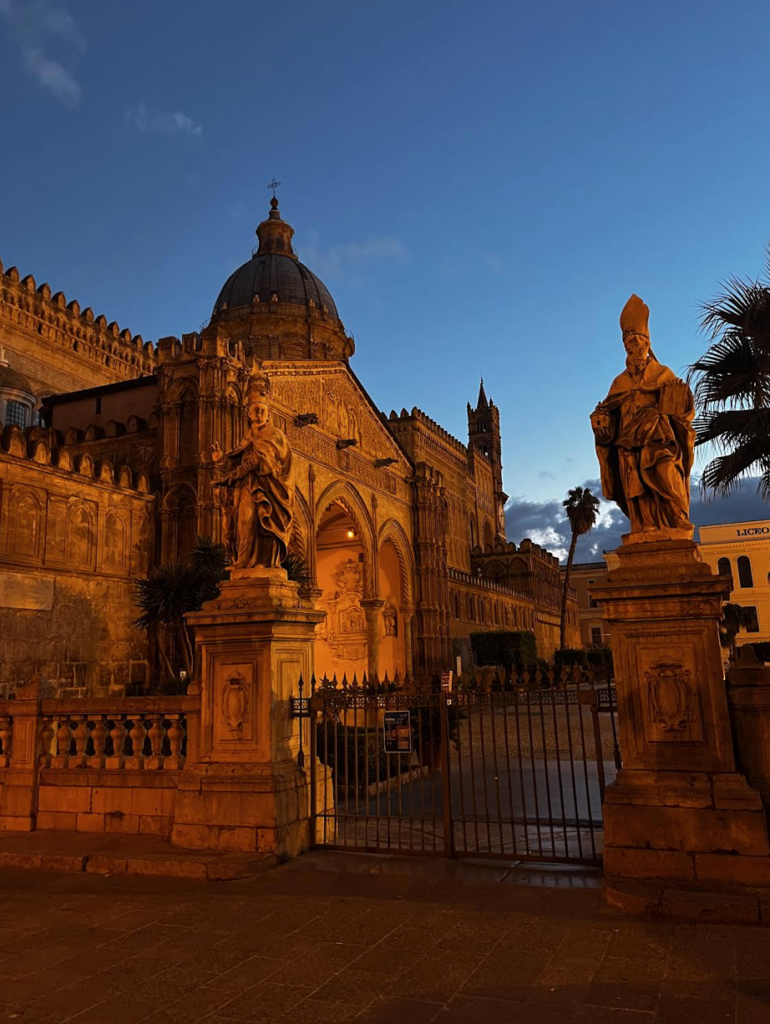
I also recommend visiting at night and going to the cathedrals rooftop balcony to get stunning night views of Palermo. The cathedral and the balcony are open quite late in summer and fall. I went at around 11 p.m. or 12 a.m. (Despite what Google will tell you) .
You can also visit a crypt beneath the church and the treasury which houses spiritual relics and other artifacts.
// Visitor hours: Monday through Saturday 7:00 a.m. – 7:00 pm. and Sunday 8:00 a.m.- 7:00 p.m.
// Entry is free to visit the cathedral and its courtyard.
You need a ticket to visit the rooftop balcony, which you can purchase inside the cathedral.
Capella Palatina (Palatine Chapel)
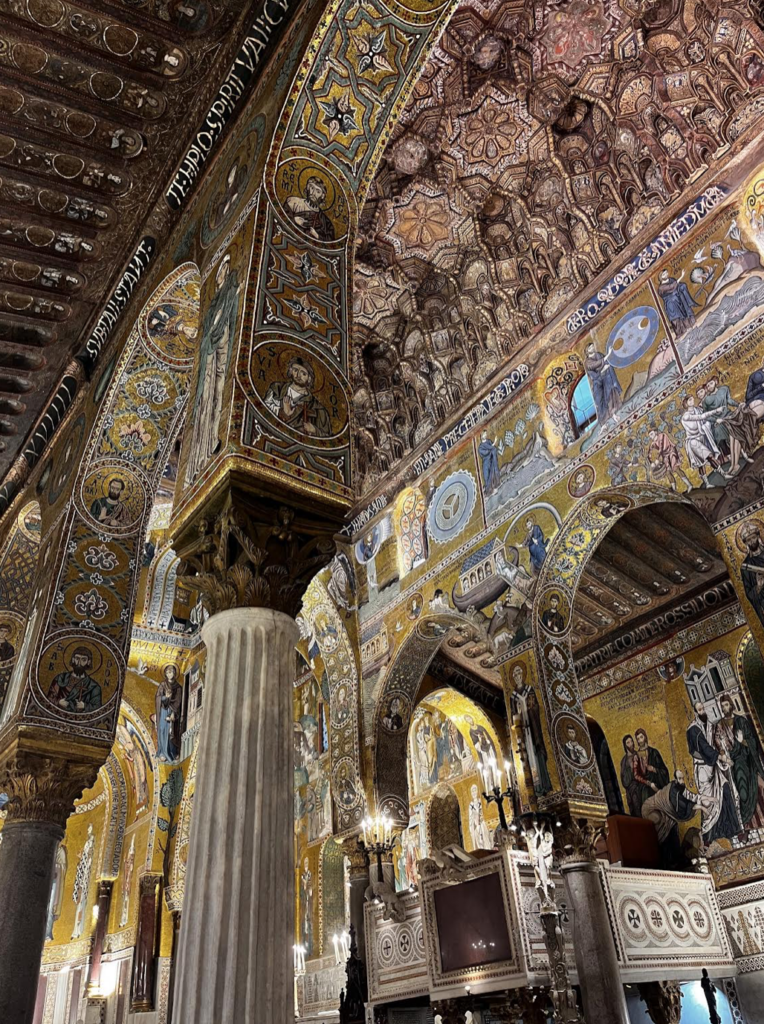
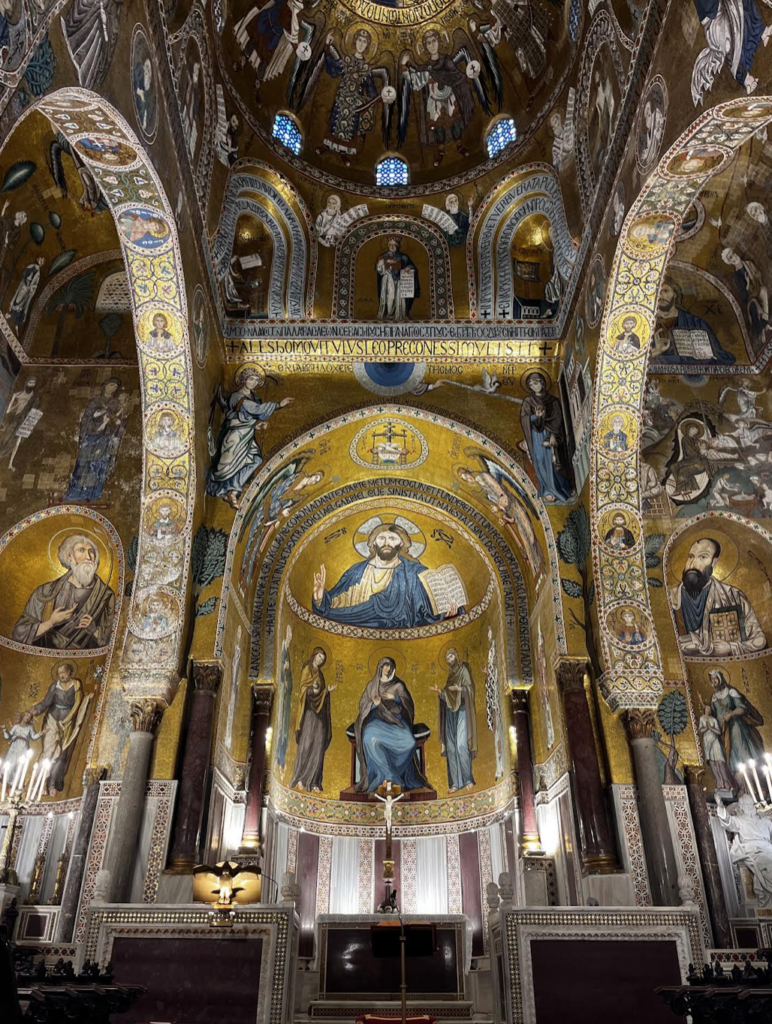
If you only go inside one church when in Palermo, it should be the Palatine Chapel. The Palatine Chapel is one of the most stunning treasures in Palermo. Commissioned by King Roger II of Sicily, the chapel combines Norman, Byzantine, and Islamic architectural designs.
The chapel is draped head to toe in intricate Byzantine mosaics. The golden mosaics are incredibly detailed and display lives of Christ, the saints, and political events in Sicily. Additionally, the ceiling of the chapel displays honeycomb-like carvings influenced from Islamic designs. The chapel really does represent Sicily, a melting pot of different cultures and worlds.
I was mesmerized by the pure beauty of the space. It was some of the best art I’ve seen in all of Italy. I think it is just as beautiful as the Sistine Chapel in the Vatican and many of the other remarkable churches in Rome.
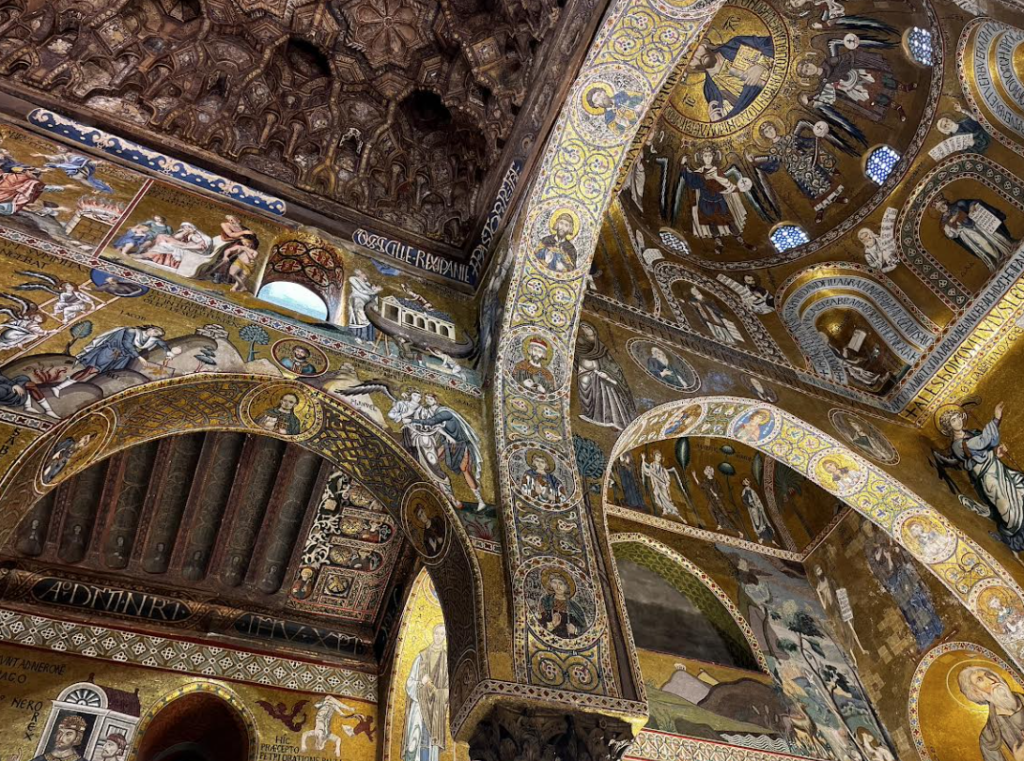
The chapel is a highlight of my Palermo Guide.
Visit Early and Purchase Tickets in Advance
I recommend pre-purchasing your tickers and visiting as soon as the Palatine Chapel opens. The Palatine Chapel get’s incredibly busy, especially when French-speaking tour groups arrive.
I was in line 15 minutes before the chapel opened. Because of this, I was the first person let inside and was able to experience the beauty of the chapel and its mosaics with significantly fewer tourists. It was also easier to photograph the mosaics.
// The Palatine Chapel is open from:
Monday to Saturday: 8:30 AM to 4:30 PM (last entry)
Sunday: 8:30 AM to 12:30 PM (last entry)
//Pre-purchase your tickets to the Palatine Chapel Here to avoid waiting in line.
Should you visit the Norman palace
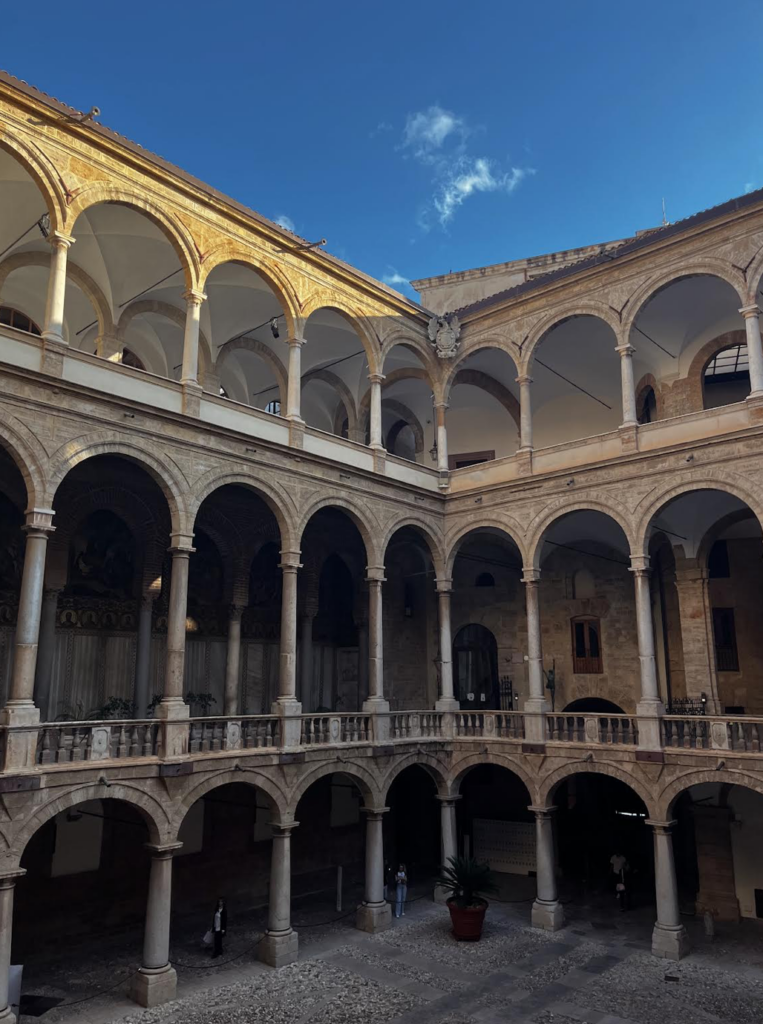
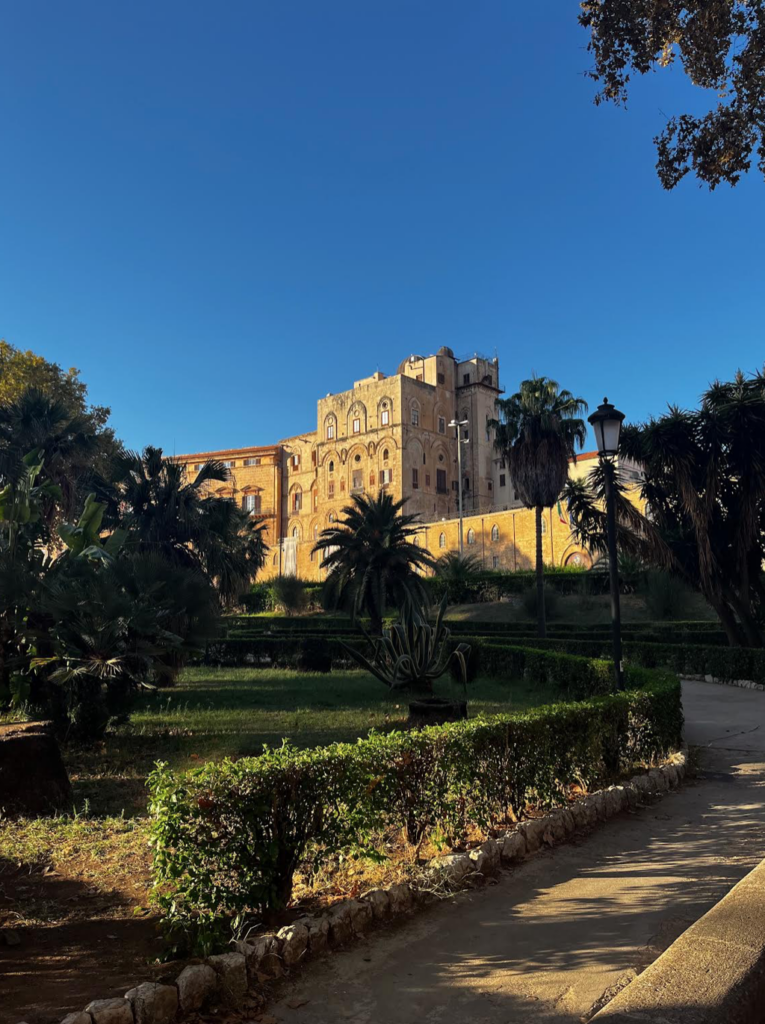
The Palatine Chapel is part of the larger Norman Palace complex. Originally built as an Arab castle, the Norman’s transformed it into their royal residence.
I personally just wanted to visit the Palatine Chapel, which is the highlight of the palace. However, if you have spare time in your day, you can spend more time exploring the Royal Apartments and the other corridors of the medieval fortress. As you make your way to the Palatine Chapel, you will have a nice view of the palace’s columned-lined courtyard.
Santa Maria dell’Ammiraglio – Church of St. Mary of the Admiral
Located in the Piazza Bellini square of Palermo, the church of St. Mary of the Admiral displays a stunning fusion of Byzantine mosaics and Italian frescos.
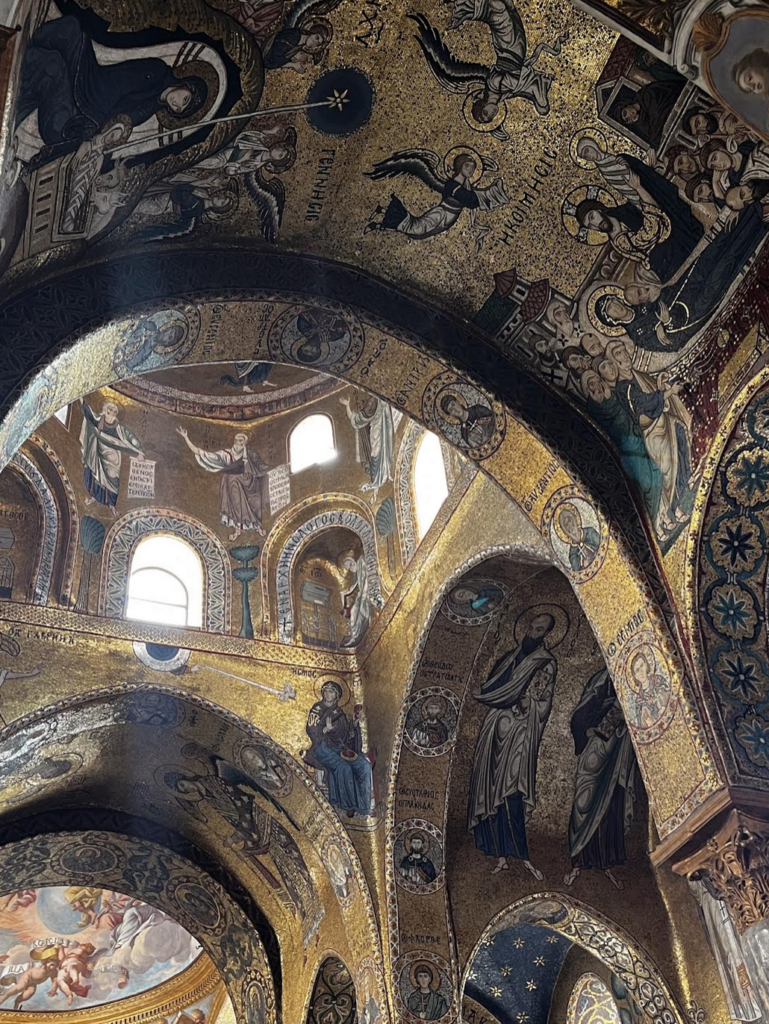
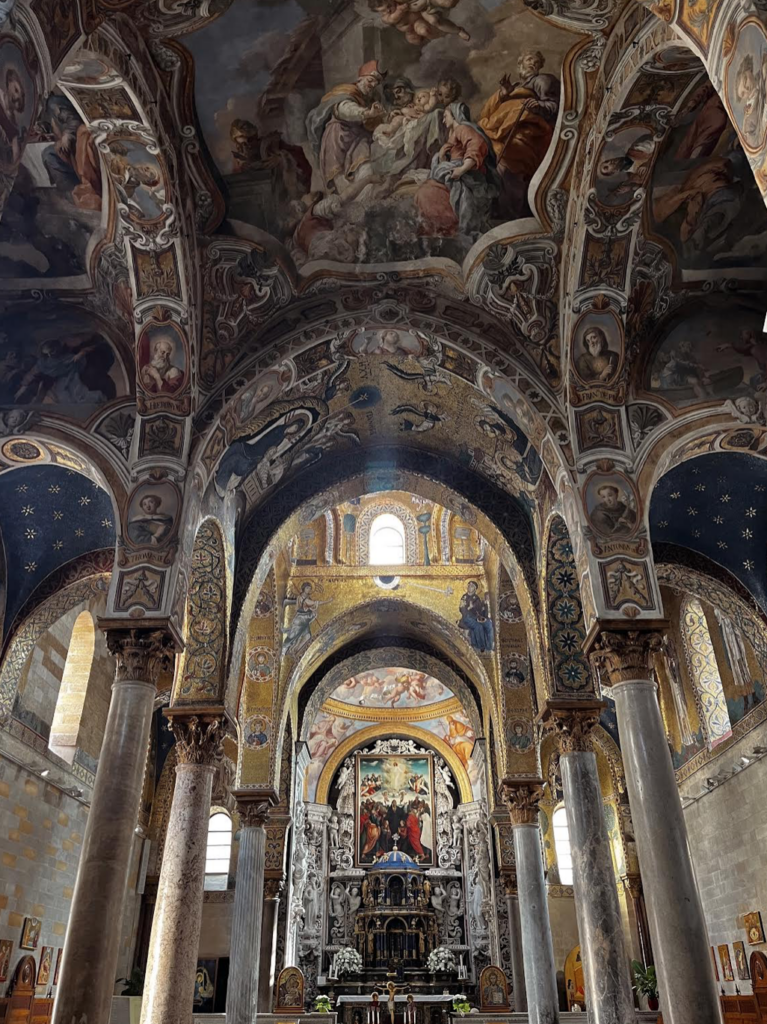
Originally built as a Greek Orthodox Church, St. Mary of the Admiral eventually became a Benedictine convent. Similarly, like the Palatine Chapel, the church displays the mastery of the Byzantine mosaics style in Sicily. There are also gold-leafed icons on the walls of the church, similar to the style found in Greece.
It is another church in the Palermo Guide that can simply not be missed.
// Visitor hours:
Monday to Saturday: 9:30 AM – 1:00 PM and 3:30 PM – 5:30 PM
Sunday: 9:00 AM – 10:30 AM
// You can purchase tickets at the entrance of the church.
Monastero di Santa Caterina d’Alessandria – Monastery of St. Catherine of Alexandria

The Monastery of St. Catherine of Alexandria is stunning. Inside, the ornate interior has colorful frescos, marble engravings, and elaborate altars. The church truly showcases the magnificence of the Baroque style in Sicily, leaving no detail spared. It remained a Catholic nunnery until 2014. It is now open for visitors to experience the local spiritual, cultural, and artistic traditions of Sicily.
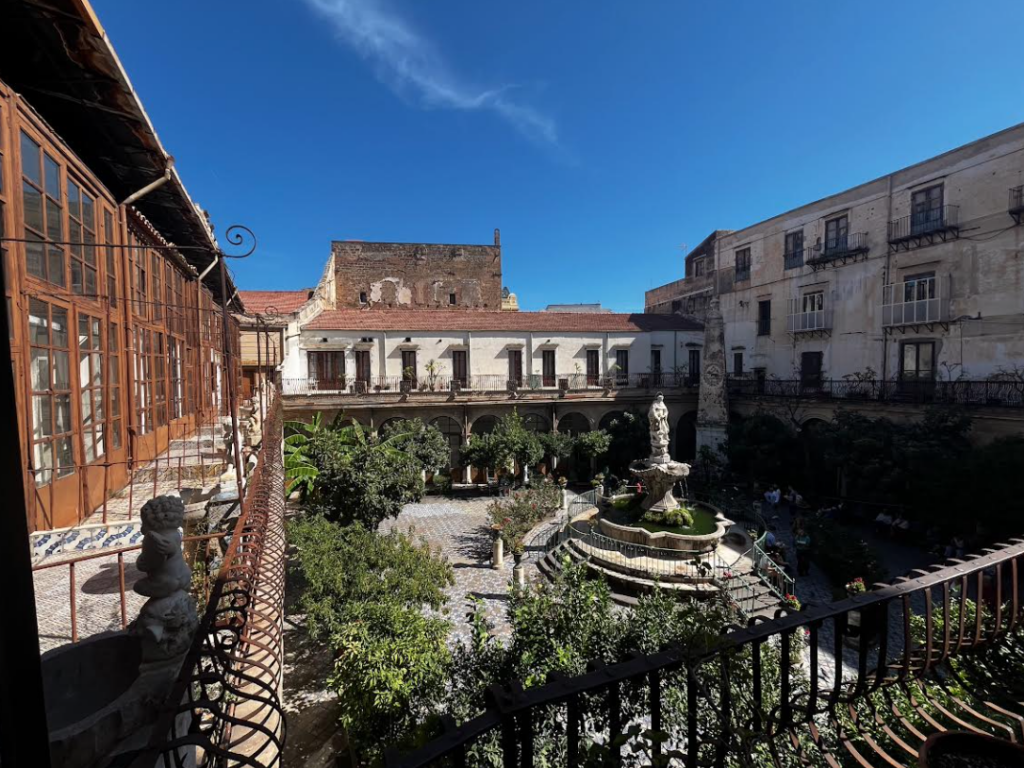
The church features a museum where you can explore the attic of the monastery and the former nuns’ cells. There is also a rose garden and a pastry shop on site.
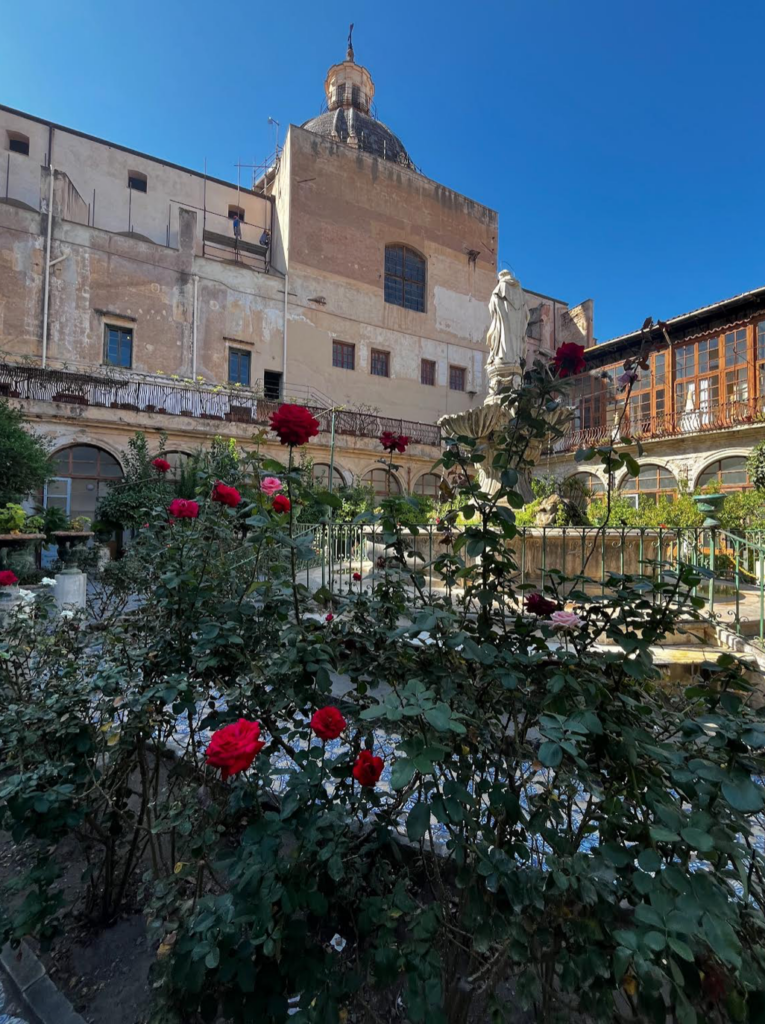

// Visitor hours: Daily from 10:00 a.m. – 6:00 p.m.; last entry 5:15 p.m.
// You can purchase tickets at the entrance of the monastery.
Church of San Giuseppe dei Padri

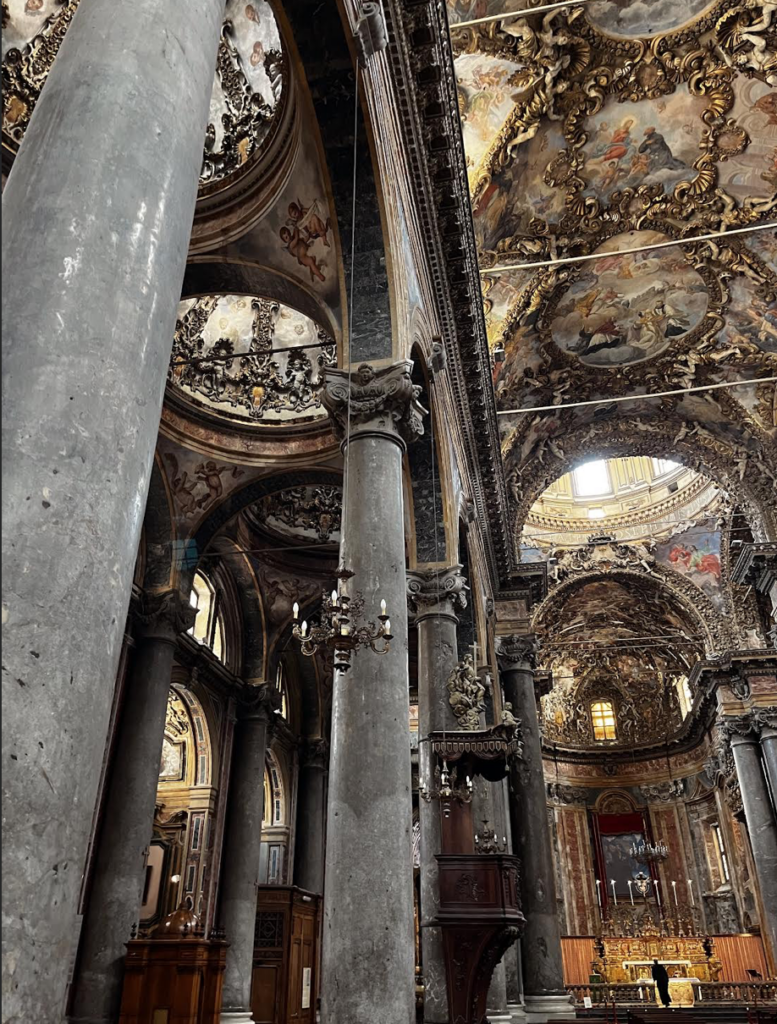
Located on the corner of Quattro Canti on the main via Vittorio Emanuele is one of my favorite churches in Palermo. Indeed, the Church of San Giuseppe is a Sicilian Baroque masterpiece. The beautifully adorned corinthian columns and vivid frescos really bring the elaborate Sicilian style to life. More importantly, it embodies the opulence the citizens of Palermo put into building their places of worship.
// You can purchase tickets at the entrance of the church.
Panoramic and Aerial Views of Palermo
One of my favorite things I did in Palermo was discovering the different panoramic views of the city. Many of the aerial shots can be reached by climbing an old bell tower or on top of one of the many domes that dot Palermo’s skyline.
I’ve included my favorite panoramic viewpoints I visited in my Palermo guide.
Dome View From the Church of Santissimo Salvatore
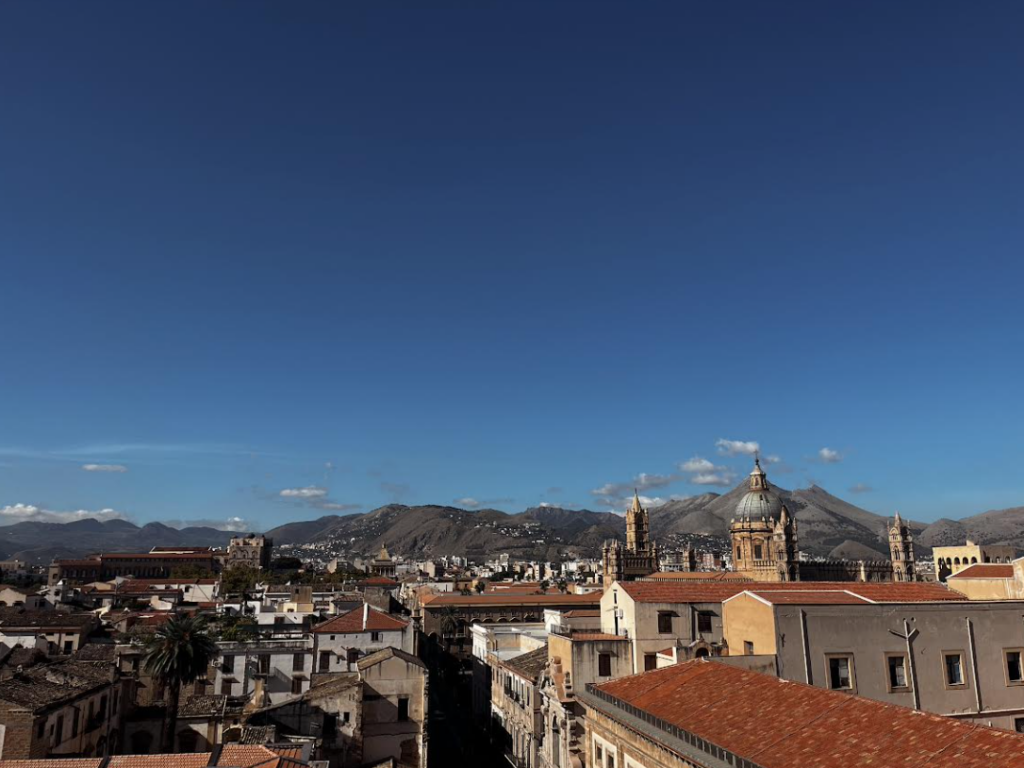
A stone throw away from the Church of San Giuseppe is the Church of Santissimo Salvatore. The interior of the church is closed to the public, but the dome of the church is available to visitors and offers some of the most stunning views in all of Palermo.
You can see the entire city and all the way out over the Mediterranean Sea. Additionally, I was able to walk around the entire dome for the full 360 degree experience of Palermo.
// You can purchase tickets at the entrance of the church.
// Hours: daily from 10:00 a.m. – 5:00 p.m.
Bell Tower of San Giuseppe Cafasso
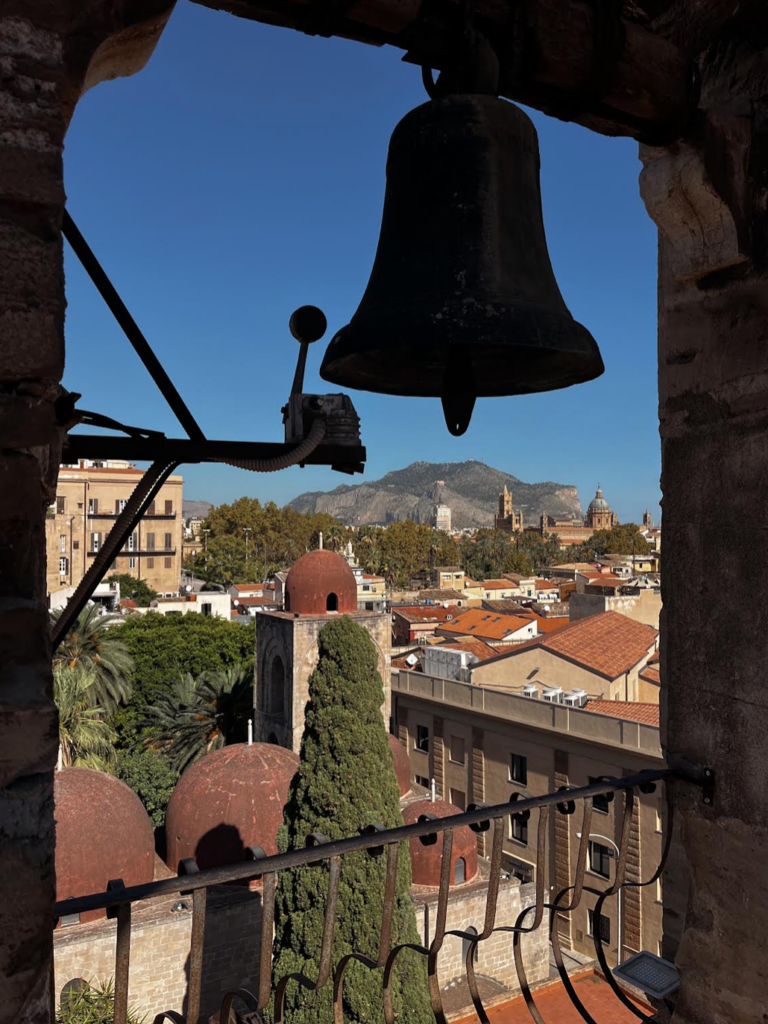
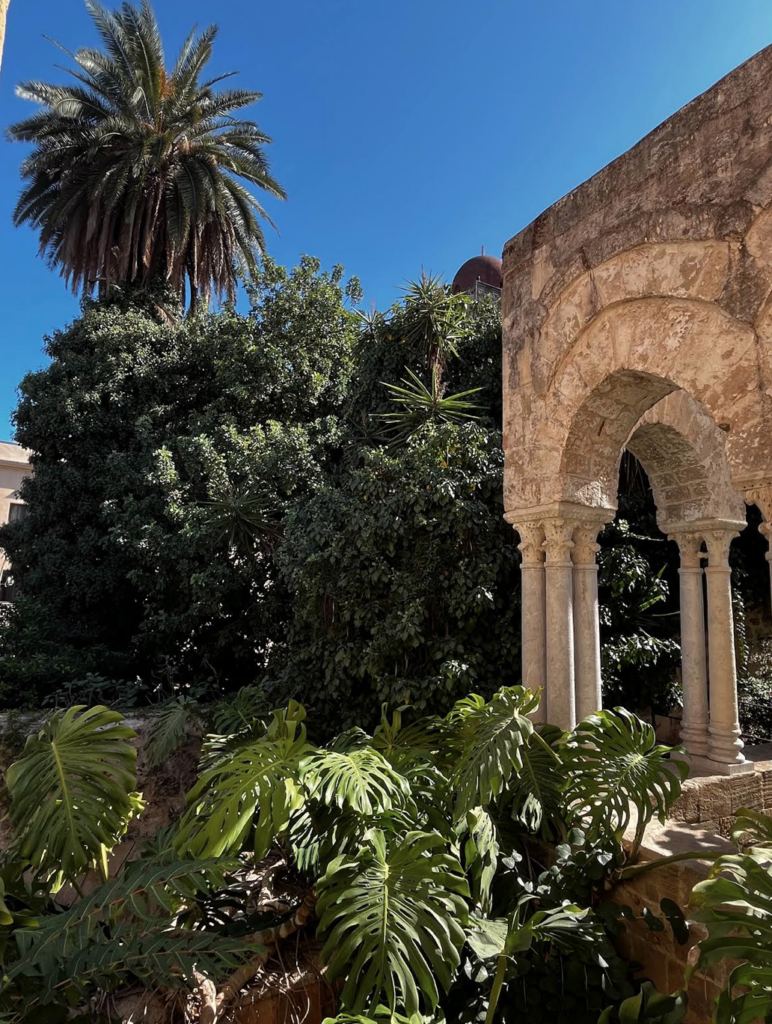
My favorite of all the panoramic viewpoints I visited in my Palermo Guide is the Bell Tower of San Giuseppe. To climb up the tower, you have to wear a hard hat provided at the entrance. Once you climb up the old metal stairs, you arrive at the top of the tower with views of the city, the ocean, and the copa of Palermo.
// The €3 entry ticket can be purchased at the church.
// Hours: Monday to Saturday: 10:00 AM – 6:00 PM; Sunday: 10:00 AM – 5:00 PM.
View From the Roof of Chiesa dei Carmine Maggiore
A quick walk from the lively Ballaro Street market is the Carmine Maggiore Church. In addition, the church provides roof access with beautiful views of the turquoise dome and the street market.
The inside is also beautiful and worth exploring and there is also a cloistered courtyard.
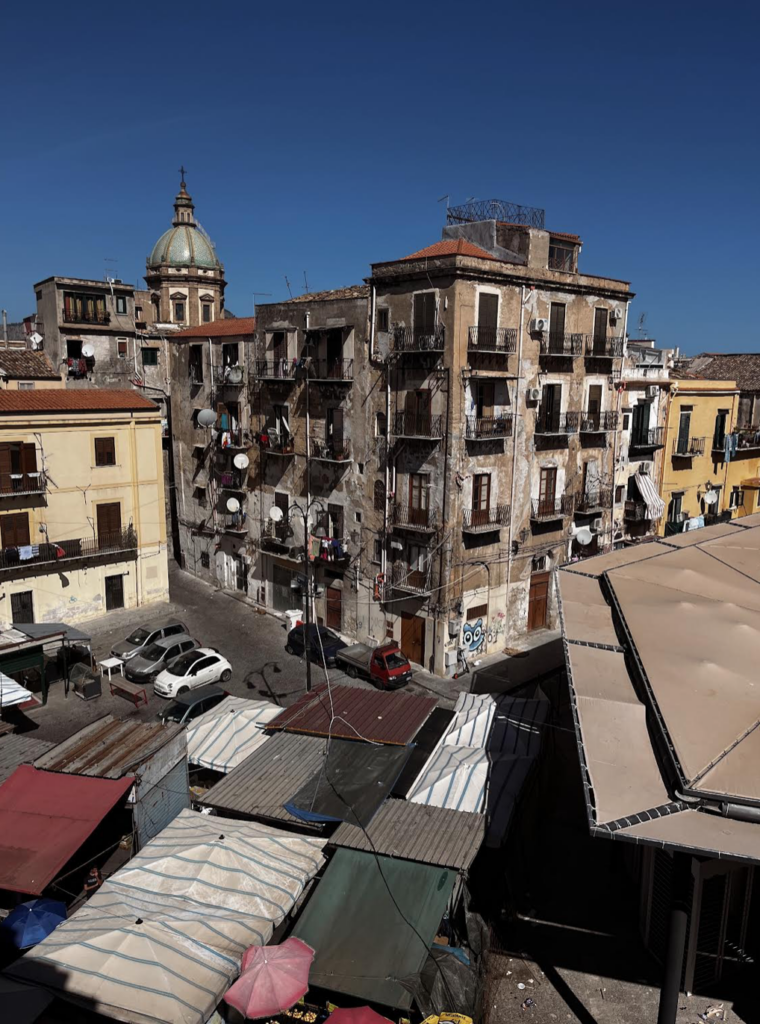
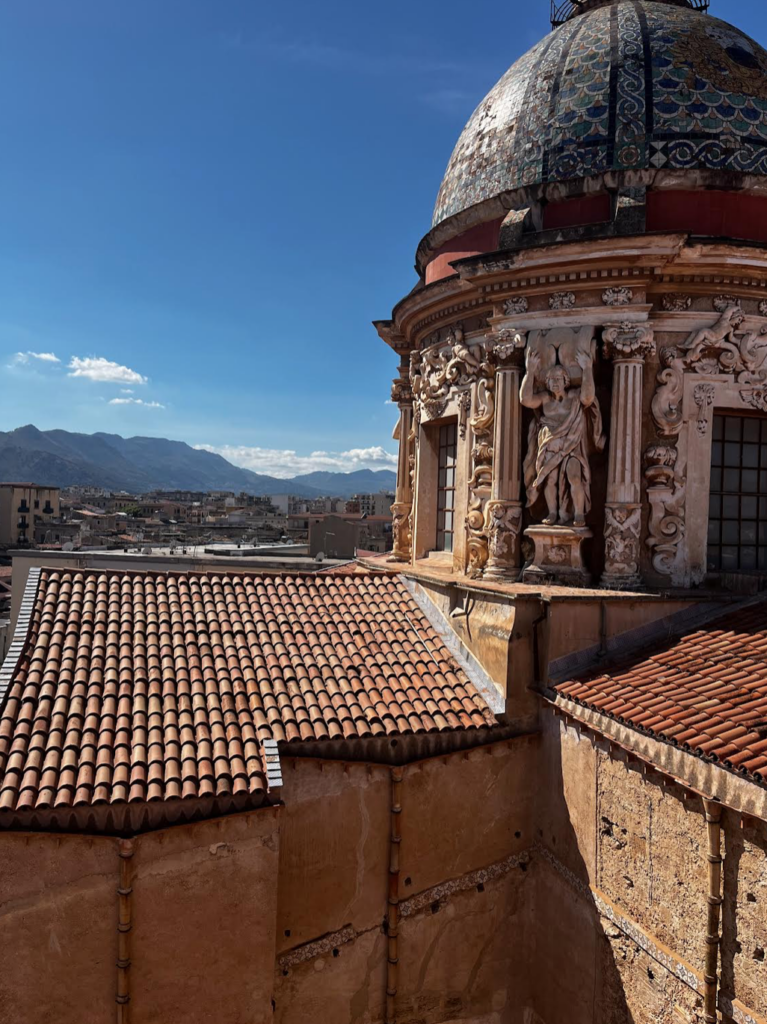
// Tickets can be purchased at the entrance of the church.
// Hours: Monday to Saturday: 10:00 AM – 1:30 PM and 2:00 PM – 4:30 PM; Sunday: 11:30 AM – 3:30 PM
Palermo Cathedral Rooftop

As mentioned earlier in my Palermo Guide, the Palermo Cathedral rooftop is stunning. I visited late in the evening, and it was especially beautiful as the city illuminated and the rooftop had significantly fewer visitors.
Palermo Guide – Sites and Places to Explore
Palermo is such a fascinating place to explore. Indeed, there really is no better city in Europe to go for a walk and get lost. Palermo really does ignite all of the senses. It has remained an inhabited city with a unique soul for three thousand years.
I have included my favorite places I discovered while exploring the city in my Palermo guide.
Quattro Canti – The Four Corners
The Quattro Canti is remarkable. Undoubtedly, it is the most recognizable intersection and street in the city.
The ornately decorated facade of the Quattro Canti was designed to commemorate the four Spanish kings of Sicily during the colonial rule of the island. Baroque statues of Palermo’s most important patron saints adorn the intersection. Additionally, the four corners also symbolizes the changing seasons of the year.
This was one of my favorite places in Palermo because it displayed how art, traditions, and stories are embedded into the very fabric of the city.
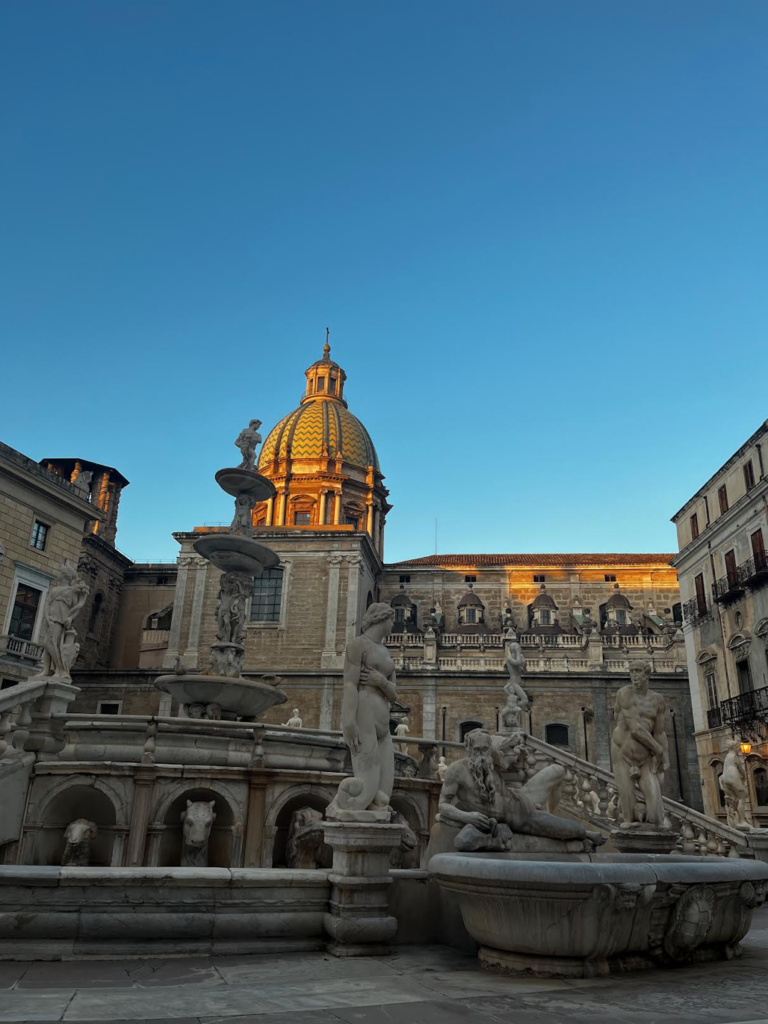
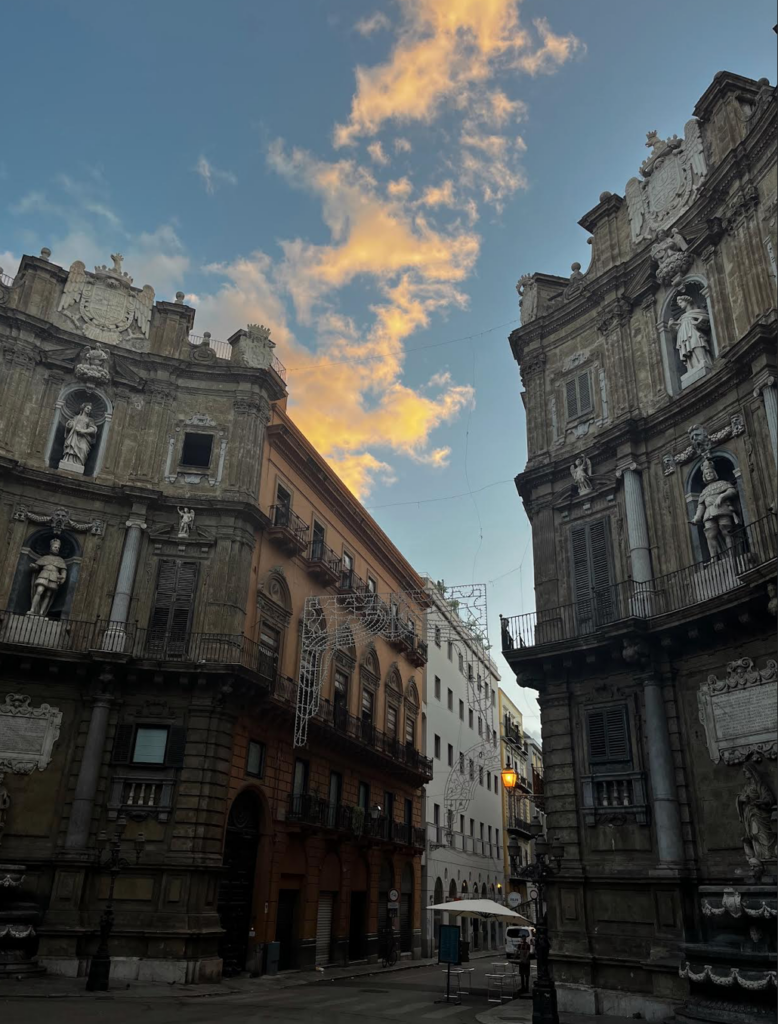
Fontana Pretoria – The Fountain of Shame
A stone throw away from Quattro Canti is the Fontana Pretoria, or fountain of Shame. In fact, this large decorative fountain has countless statues of ancient gods, nymphs, and mythical creatures.
The Roman Catholic Church was less than pleased by the presence of the fountain between two of the cities most important churches. Occasionally, nuns chiseled off parts of the statue or covered them to make them more modest.
Villa Bonanno

Right in front of the Norman Palace and Palatine Chapel is the Villa Bonanno. This charming garden is a serene place to recharge and admire the many soaring palms.
Villa Bonanno definitely felt like a relaxing oasis within the otherwise fast-paced and chaotic energy of Palermo.
Ballaro Market


The Ballaro Market is the oldest and most famous outdoor market in Palermo. It is a bustling, lively, and chaotic meeting point. While exploring, I savored fresh calamari, spicy sausage, and fresh fruit. The energy was electric. The market also had my favorite Arancini in the city.
Watch your belongings as corridors are tight and this is the perfect place to become a victim of pickpocketing.
// Market Hours: Monday – Saturday 7:00 am – 7:30 p.m. Sunday 7:00 a.m.- 1:00 p.m.
Port of Palermo
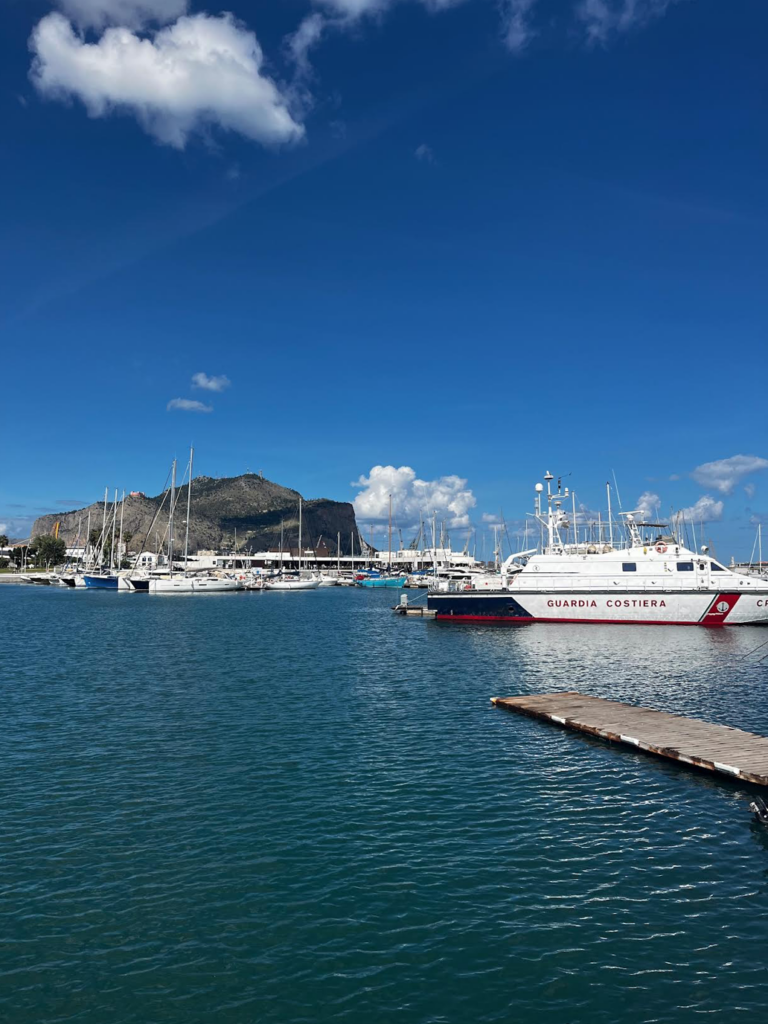

The Port of Palermo is a relaxing place to watch the ships sail bye. Behind the port is Monte Pellegrino, a scenic background to the boat traffic and the Mediterranean Sea.
There is a beach adjacent to the port for those looking to spend some time by the sand.
Villa Giulia
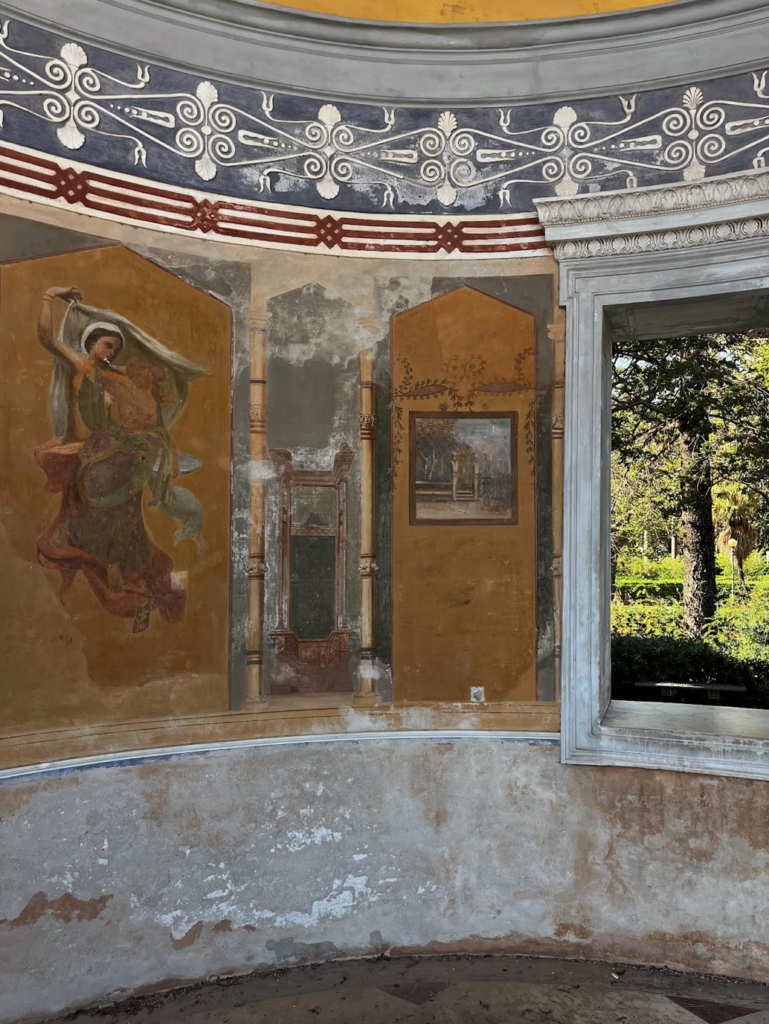
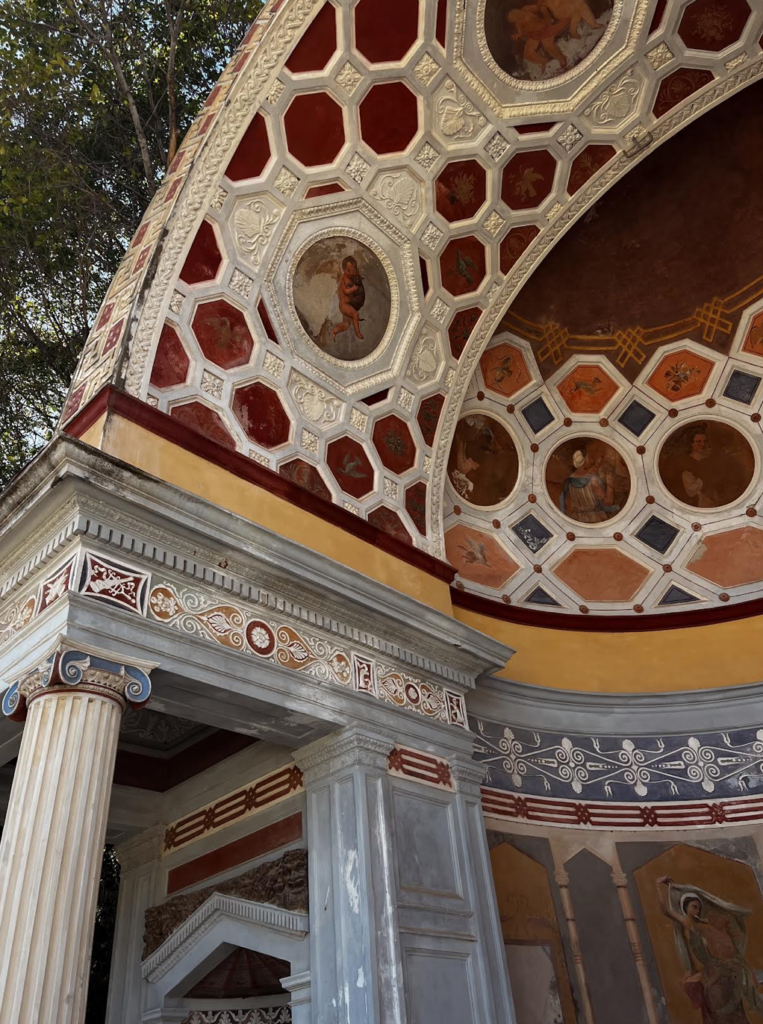
Near the Port of Palermo is Villa Giulia. The Villa Giulia is a must stop in my Palermo guide.
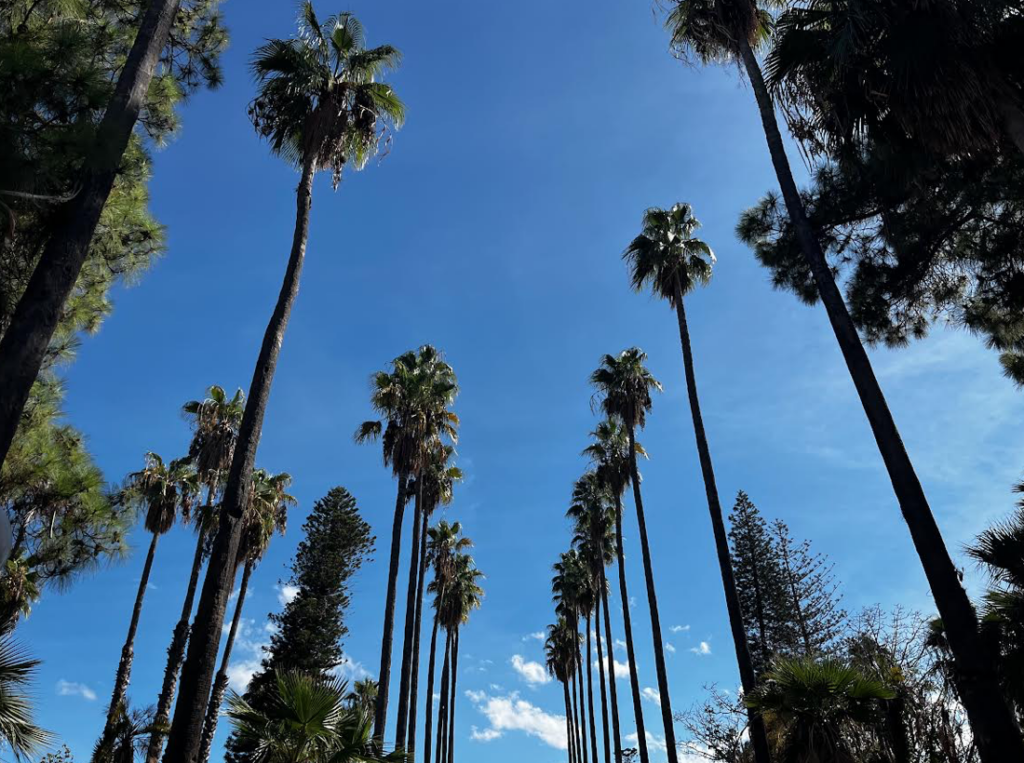
This 18th century park is filled with statues, charming neoclassical structures, and towering palms that make you feel like you’re in Los Angeles or Beverly Hills. Moreover, the lush greenery and Mediterranean charm in this park is very calming from the fast pace of Palermo.
There is also an espresso bar at the corner of Villa Giulia which is the perfect place for a caffeine break.
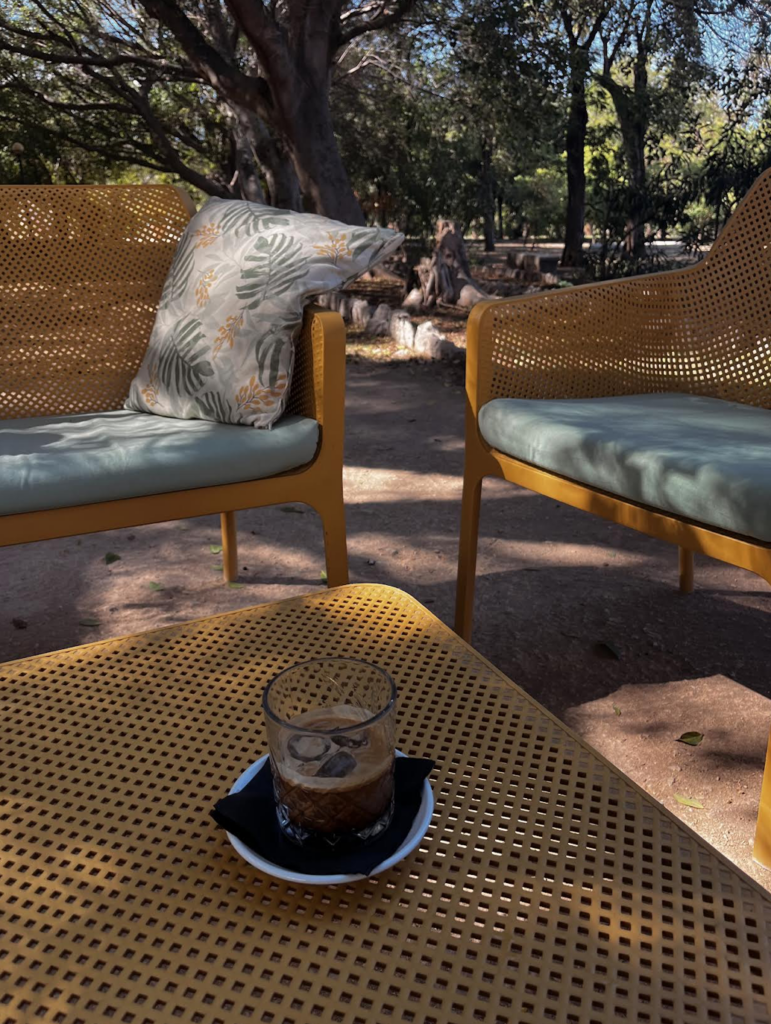
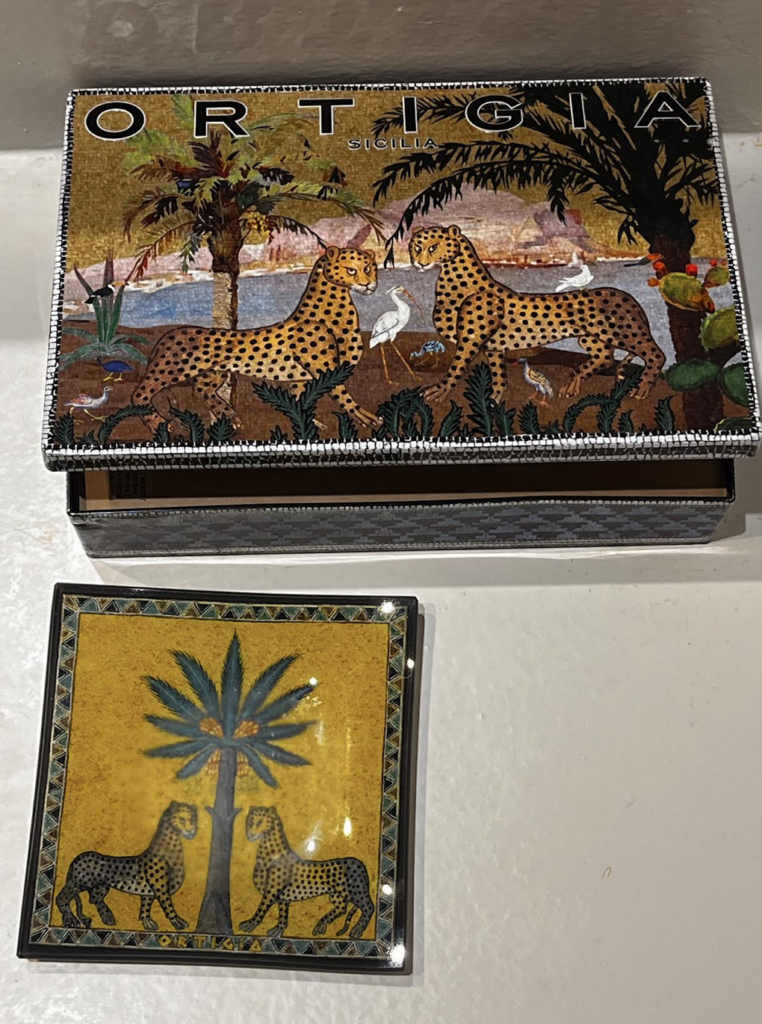
Shop at Ortigia Sicilia
Ortigia Sicilia is one of Sicily’s most recognizable global brands. In particular, the company is best known for their luxury fragrances and perfumes.
They also sell products showcasing local Sicilian art and culture like their jaguar plates which depict a mosaic in the Palatine Chapel.
Piazza san francesco di paola
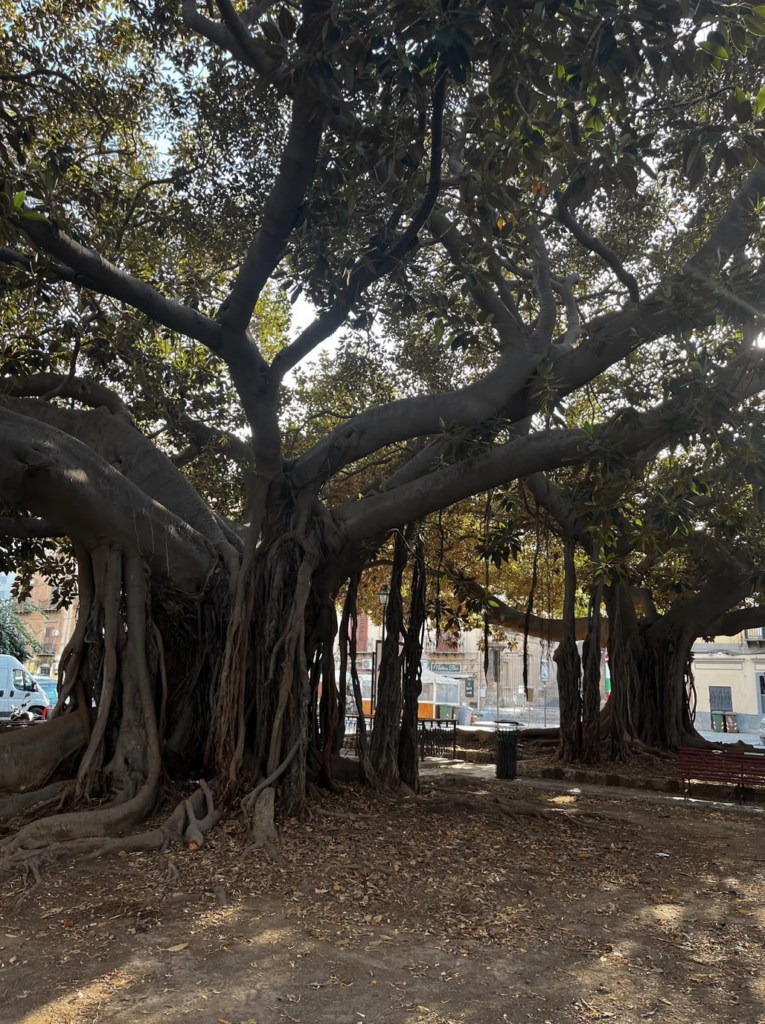
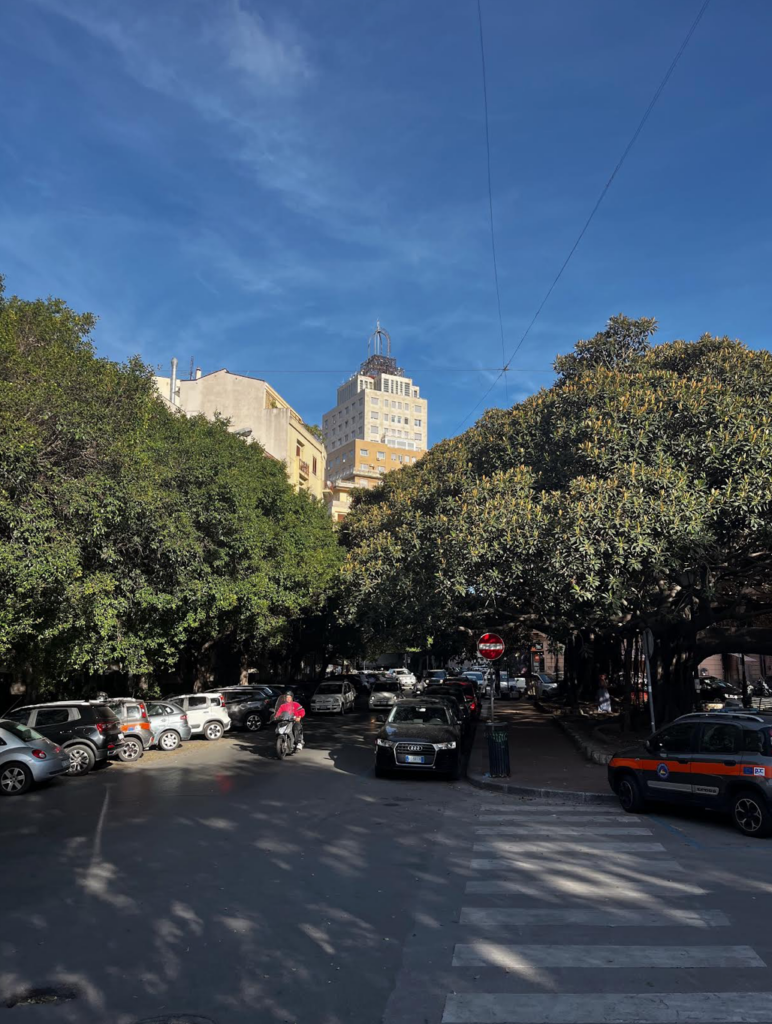
The Piazza San Francesco di Paola is an inviting tree lined street that leads to a small park with some of the oldest trees in Palermo.
The atmosphere of the park is very serene and the surrounding buildings are very charming. In fact, it’s an area of the city which feels remarkably less touristy.
Teatro Massimo
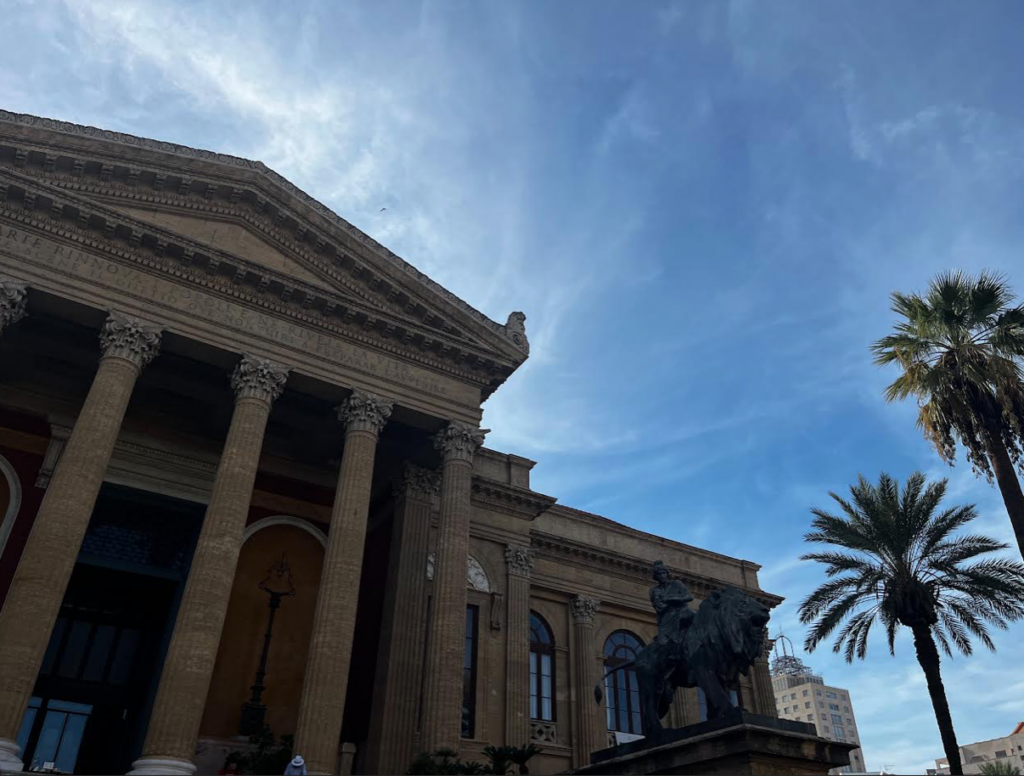
As Italy’s largest opera house, the Teatro Massimo is one of the most impressive buildings in all of Palermo. Specifically, the neoclassical style was influenced by ancient Greek and Roman temples. Additionally, the theater boasts a massive dome which is very impressive.
Visitors can tour the theater. The theater also regularly hosts ballets, operas, and concerts.
Porta Prima Circoscrizione
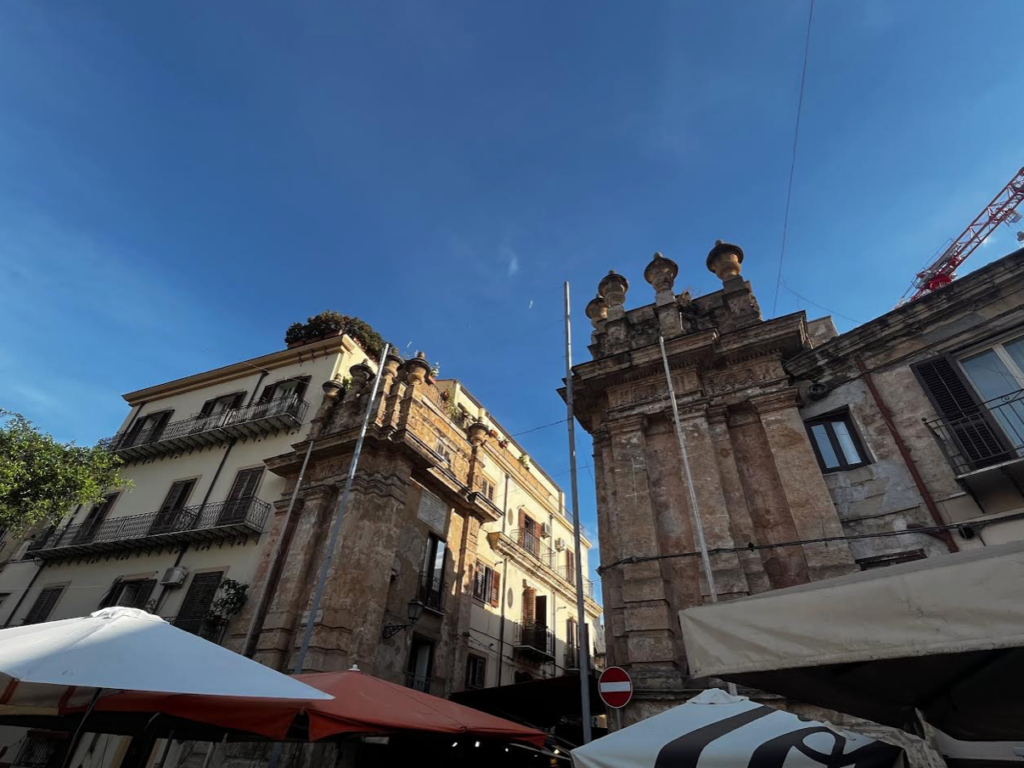
The Porta Prima Circoscrizione is a historic gate in the city center that was used as an entrance in the walls during ancient times. As a key feature of the old walls, it protected Palermo from invaders for centuries. It was a key point of entry into Palermo for merchants and travelers. The Normans, Arabs, and Spanish all added styles to the walls and the gate.
Today it is an entry point into the Vucciria neighborhood of Palermo. The Porta Prima Circoscrizione is a hidden but meaningful monument in the Palermo guide.
No Mafia Memorial
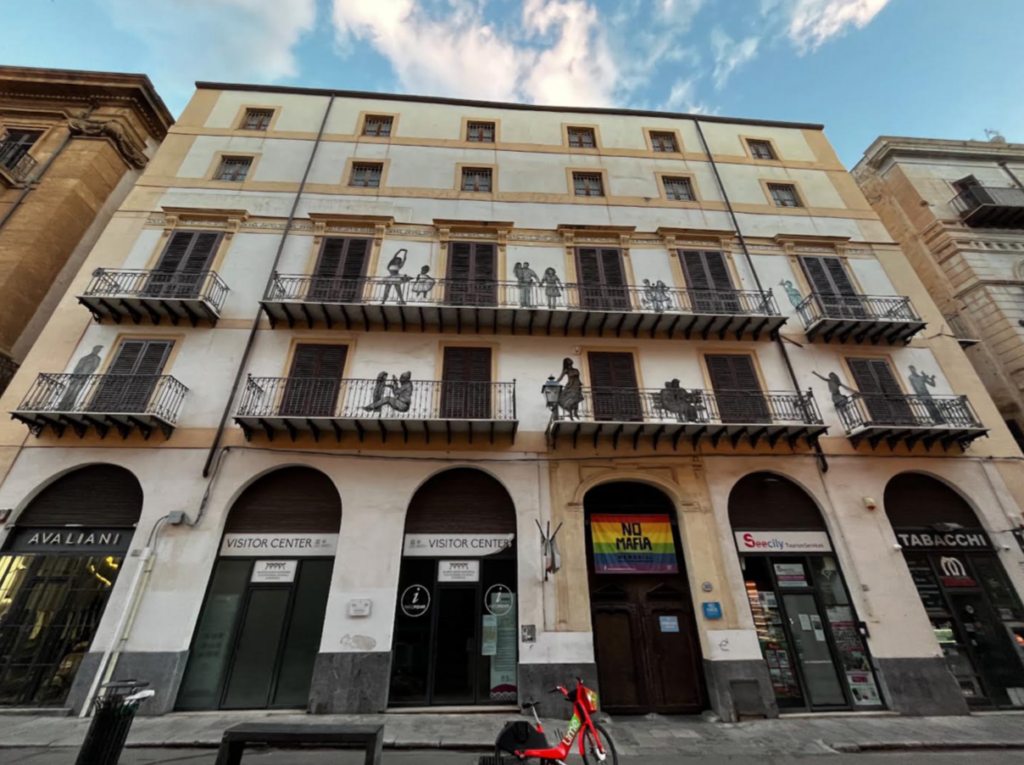
The No Mafia Memorial is a cultural and educational space to raise awareness about the Mafia and organized crime in Sicily. Located in the heart of the Cassaro street, the museum shares the stories of how the Mafia has affected the city. Additionally, the memorial also remembers the efforts of those who opposed the mafia and shares modern goals to limit their control. Unfortunately, the Mafia is still present in Sicily to this day.
I didn’t have time to make it to the No Mafia Memorial, but it’s on the top of my list when I return to Palermo.
// Hours: Open daily from 11:00 a.m. – 5:00 pm.m
// Purchase tickets for the No Mafia memorial here
2 Day Palermo Guide Itinerary
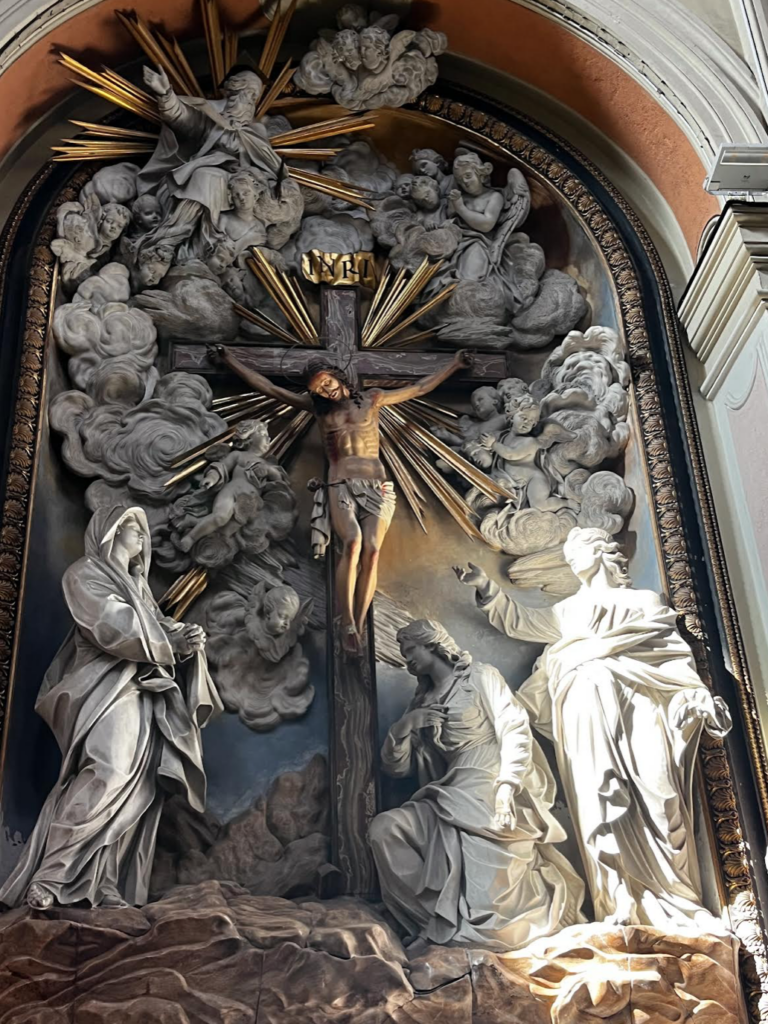
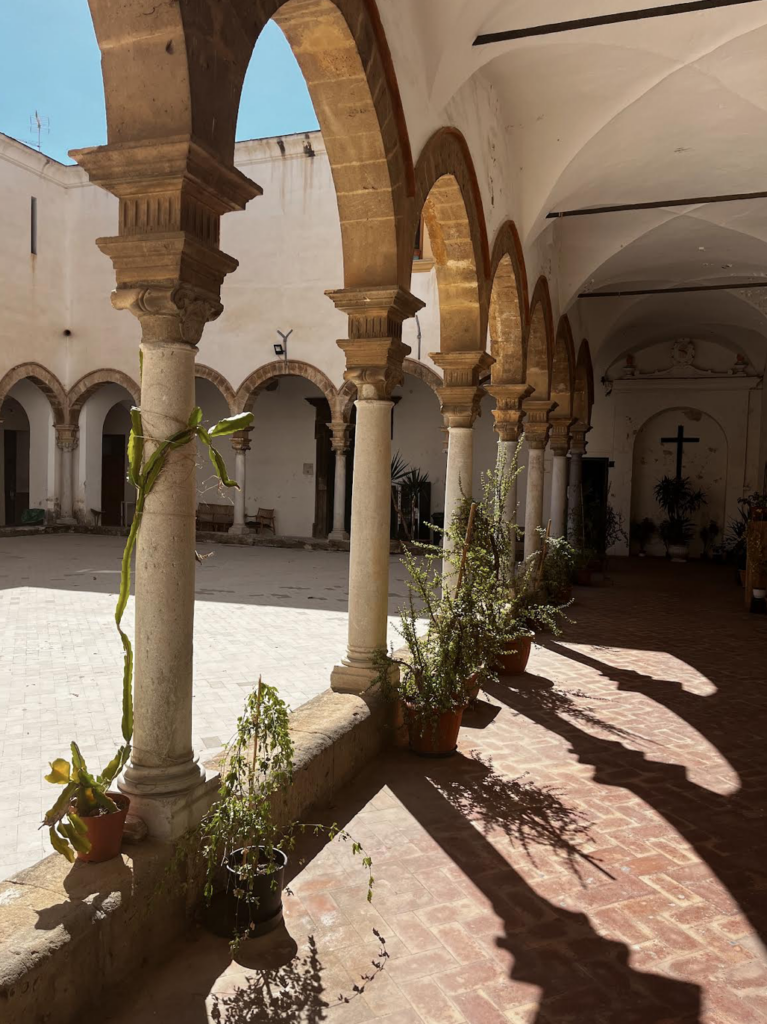
Below is everything I did in my two days discovering Palermo.
Note: Remember to leave yourself plenty of time to wander and get lost while exploring Palermo. The hidden corners of the city give Palermo its charm.
Day 1 in Palermo Guide
- Early sunrise to photograph Palermo Cathedral in the morning light
- Quattro Canti
- Fountain of Shame
- Villa Bonanno
- Palatine Chapel
- Church of San Giuseppe dei Padri Teatini
- Church of St. Mary of the Admiral
- Walk the dock at the Port of Palermo
- Villa Giulia
- Get lost in the Kalsa neighborhood
Day 2 in Palermo Guide
- Morning trip to Monreale Cathedral (6 miles from Palermo)
- Dome View From the Church of Santissimo Salvatore
- Bell Tower of San Giuseppe Cafasso
- Ballaro Street Market
- Monastery of St. Catherine of Alexandria
- Teatro Massimo
- Piazza san francesco di paola
- Porta Prima Circoscrizione
I hope you found my Palermo Guide helpful in planning your trip to Sicily. If you have any questions or thoughts, go ahead an leave a comment. Would love to hear what you loved most about Palermo.

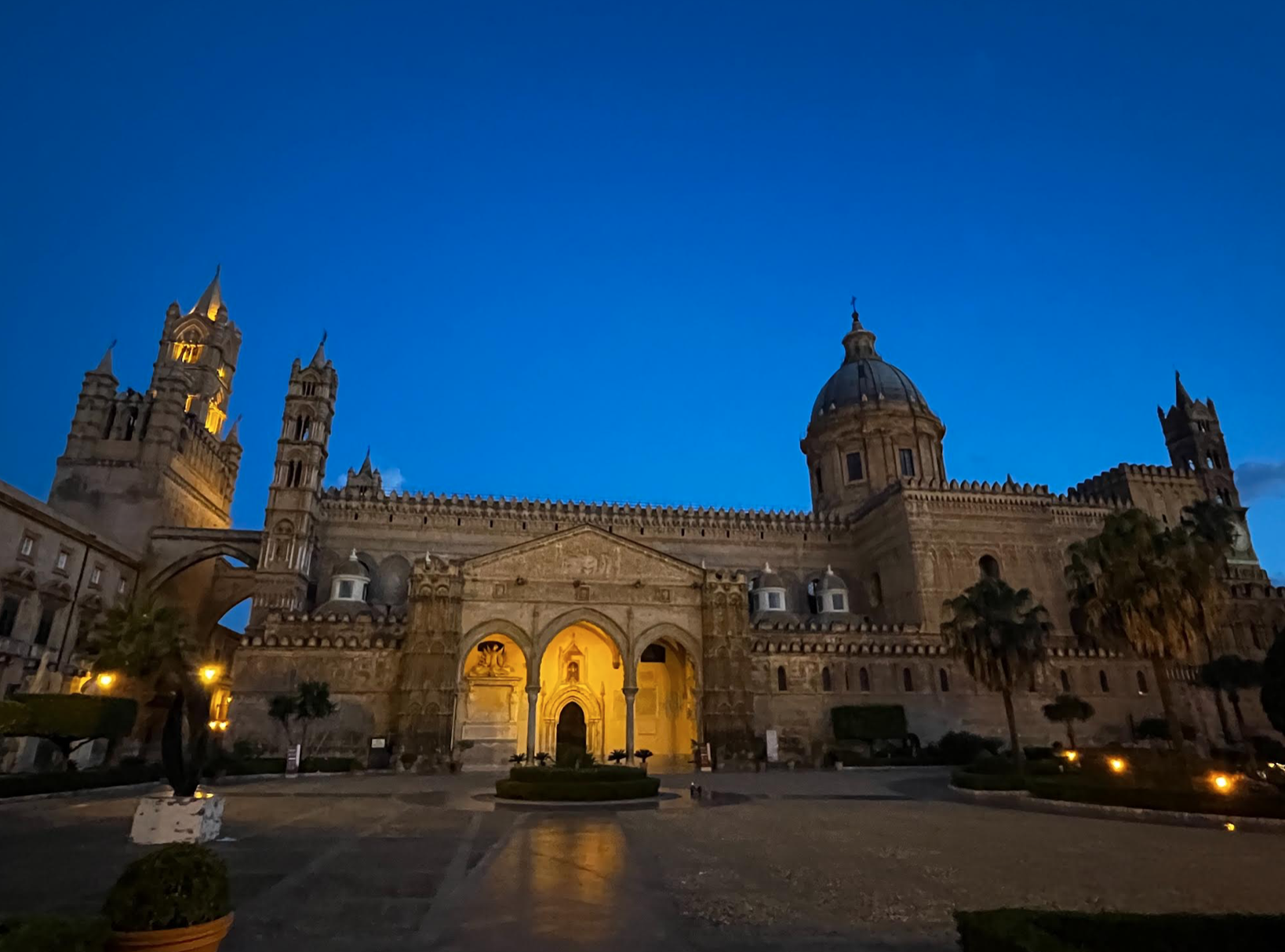
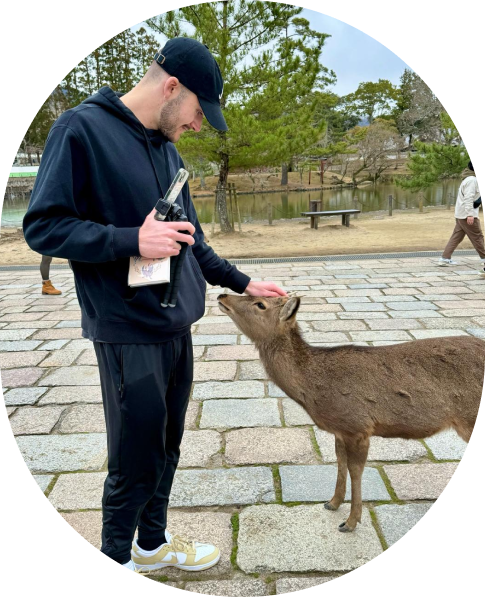
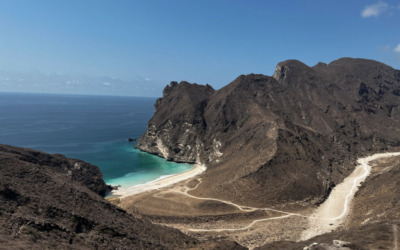
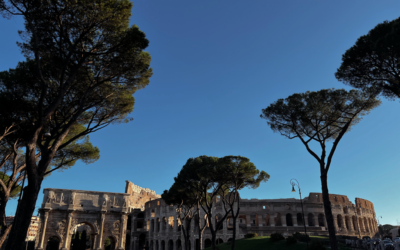
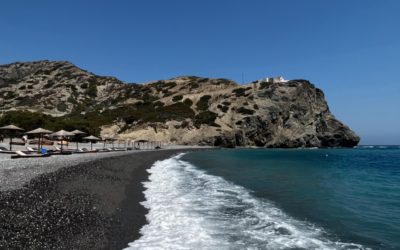
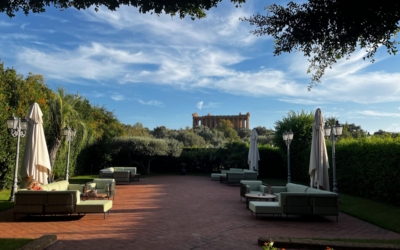

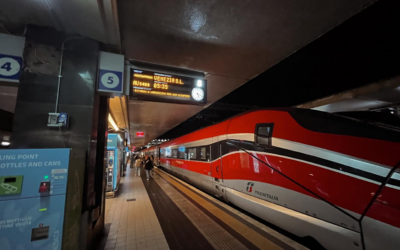

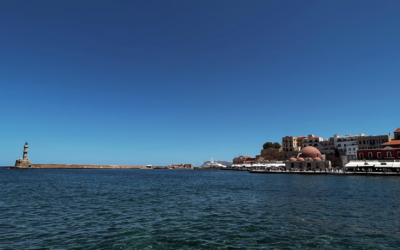

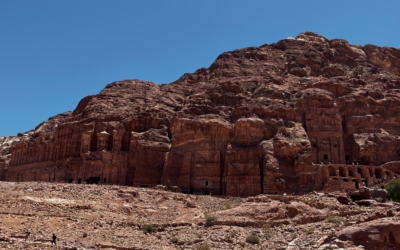
0 Comments